Vol. 71, No. 11 (2022)
2022-06-05
VIEWS AND PERSPECTIVES

VIEWS AND PERSPECTIVES
2022, 71 (11): 118103.
doi: 10.7498/aps.71.20220891
Abstract +
INVITED REVIEW
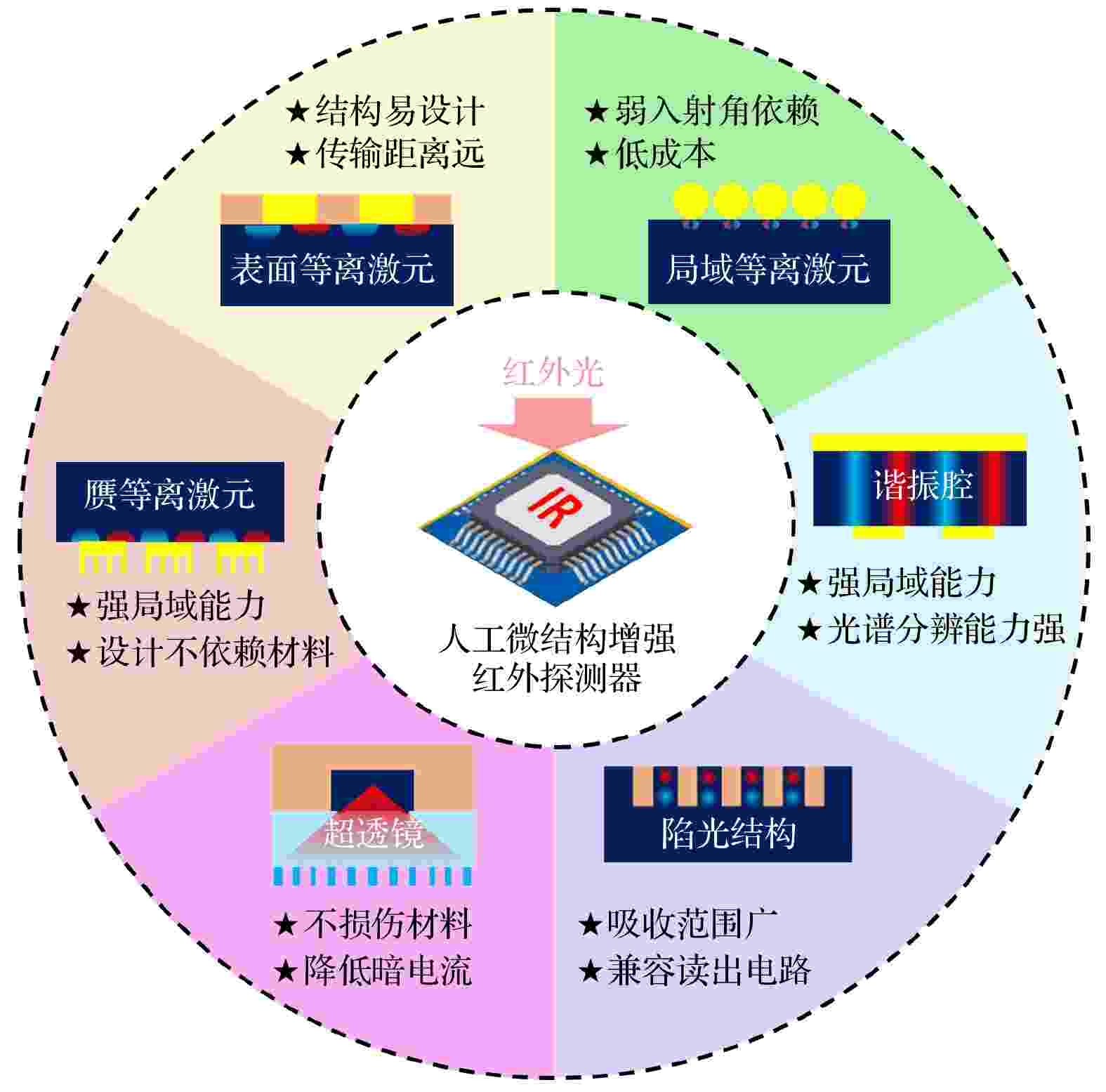
INVITED REVIEW
2022, 71 (11): 110703.
doi: 10.7498/aps.71.20220380
Abstract +
The infrared detectors own the ability to convert information carried by photons radiated by objects into electrical signals, which broadens the horizons of human beings observing the natural environment and human activities. At present, long and very long-wavelength infrared detections have many applications in atmospheric monitoring, biological spectroscopy, night vision, etc. As the demand for high-performance infrared detectors grows rapidly, it is difficult for traditional infrared detectors to arrive at performance indicators such as high response rate, high response speed, and multi-dimensional detection. The artificial structure designed based on micro- and nano-optics can be coupled with infrared photons efficiently, and control the degrees of freedom of infrared light fields such as amplitude, polarization, phase, and wavelength comprehensively. The systems integrated by infrared detectors and artificial micro- and nano-photonic structures provide additional controllable degrees of freedom for infrared detectors. And they are expected to achieve high quantum efficiency and other merits such as high response rate, excellent polarization, and wavelength selectivity. In this review paper, the research progress of the application of artificial micro- and nano-structure in the long and very long-wavelength infrared bands is presented; the advantages, disadvantages, and the application status of different mechanisms are described in detail, which include surface plasmon polaritons, localized surface plasmon, resonant cavity structure, photon-trapping structure, metalens, spoof surface plasmon, gap plasmon, and phonon polariton. In addition, the development prospect and direction of artificial micro- and nano-structure in long-wave and very long-wave infrared devices are further pointed out.
GENERAL
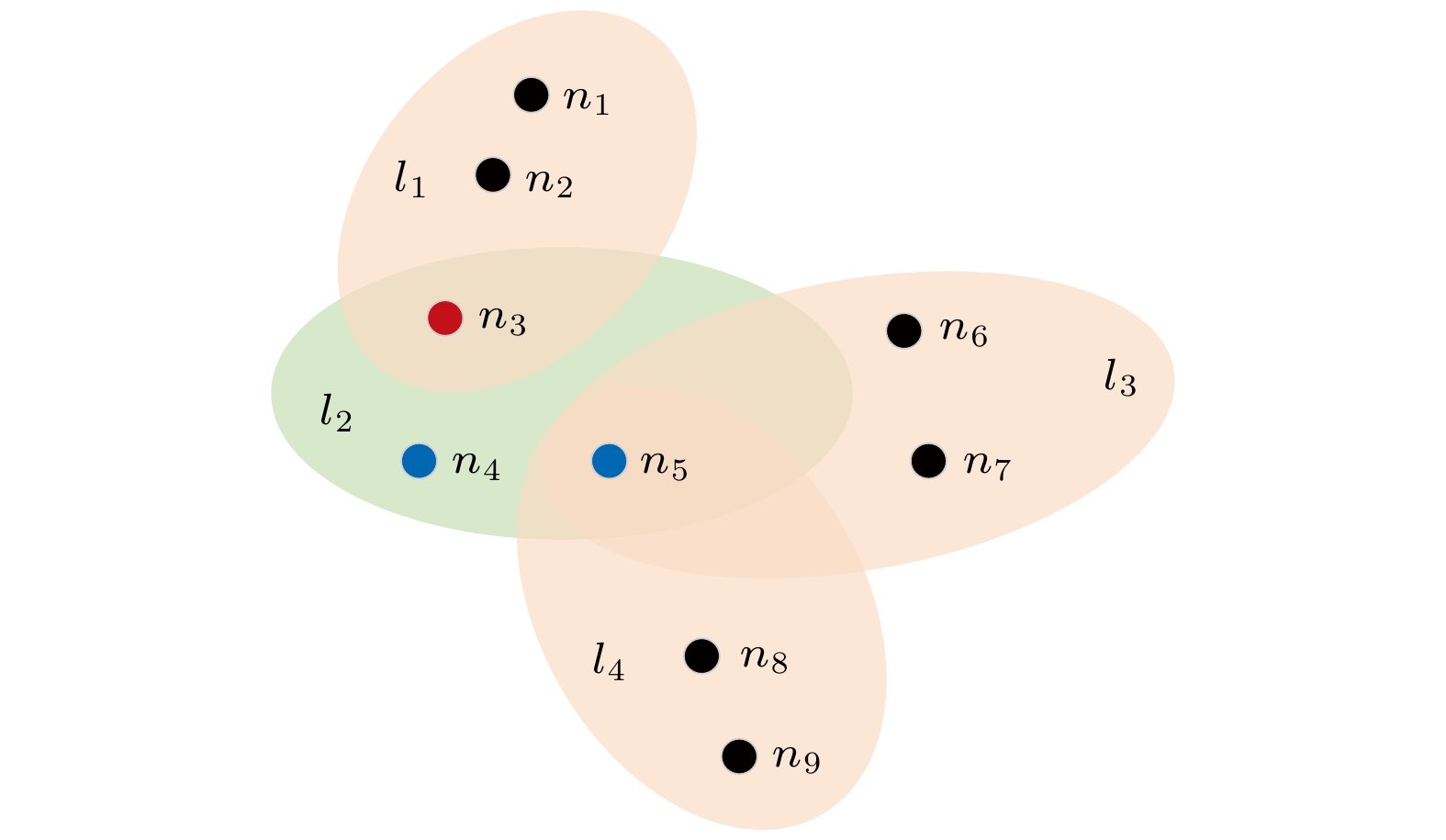
2022, 71 (11): 110201.
doi: 10.7498/aps.70.20212436
Abstract +
The spatial structure and social diversity playing a nontrivial role in the emergence and maintenance of cooperation among selfish individuals have been verified. Their effects on the evolution of cooperation have attracted great attention in recent years. Most of previous evolutionary game dynamics is based on pairwise interactions. However, the interactions often take place within groups of people in many real situations and cannot be described simply by dyads. The dynamics of evolutionary games in systems with higher-order interactions has not yet been explored as deserved. In this paper, we introduce heterogeneous multiplication factors into the spatial public goods game to investigate the cooperative behaviors on the hypergraphs. In addition to the original model in which all groups have the same multiplication factor, three types of heterogeneous multiplication factor distributions including uniform, exponential and power-law distributions are considered. The numerical simulation results show that the increase of the order g of the uniform random hypergraphs is conducive to the emergence and prosperity of the individuals' cooperative behavior no matter what types these distributions belong to. Furthermore, compared with the results of the original spatial public goods games on hypergraphs, the heterogeneous multiplication factors following three different distributions can remarkably promote the evolution of cooperation. In particular, for most of ranges of the average rescaling multiplication factor $r_0$ , the highest cooperation level can be obtained under the power-law distribution, while the uniform distribution leads to the lowest cooperation level. We provide an explanation through investigating the number of cooperators in each group. In addition, to probe into the essence that influences the survival of cooperative behaviors, we study the time series of the fraction of groups with different numbers of cooperators. Besides, we also investigate the influence of the number of hyperlinks on cooperation evolution. We find that the results are robust against the number of hyperlinks L, and the emergence of cooperative behaviors in public goods games on hypergraphs is hindered with the value of L increasing. To some extent, these results are helpful in the better understanding of the evolutionary dynamics of the spatial public goods games on hypergraphs with social diversity.
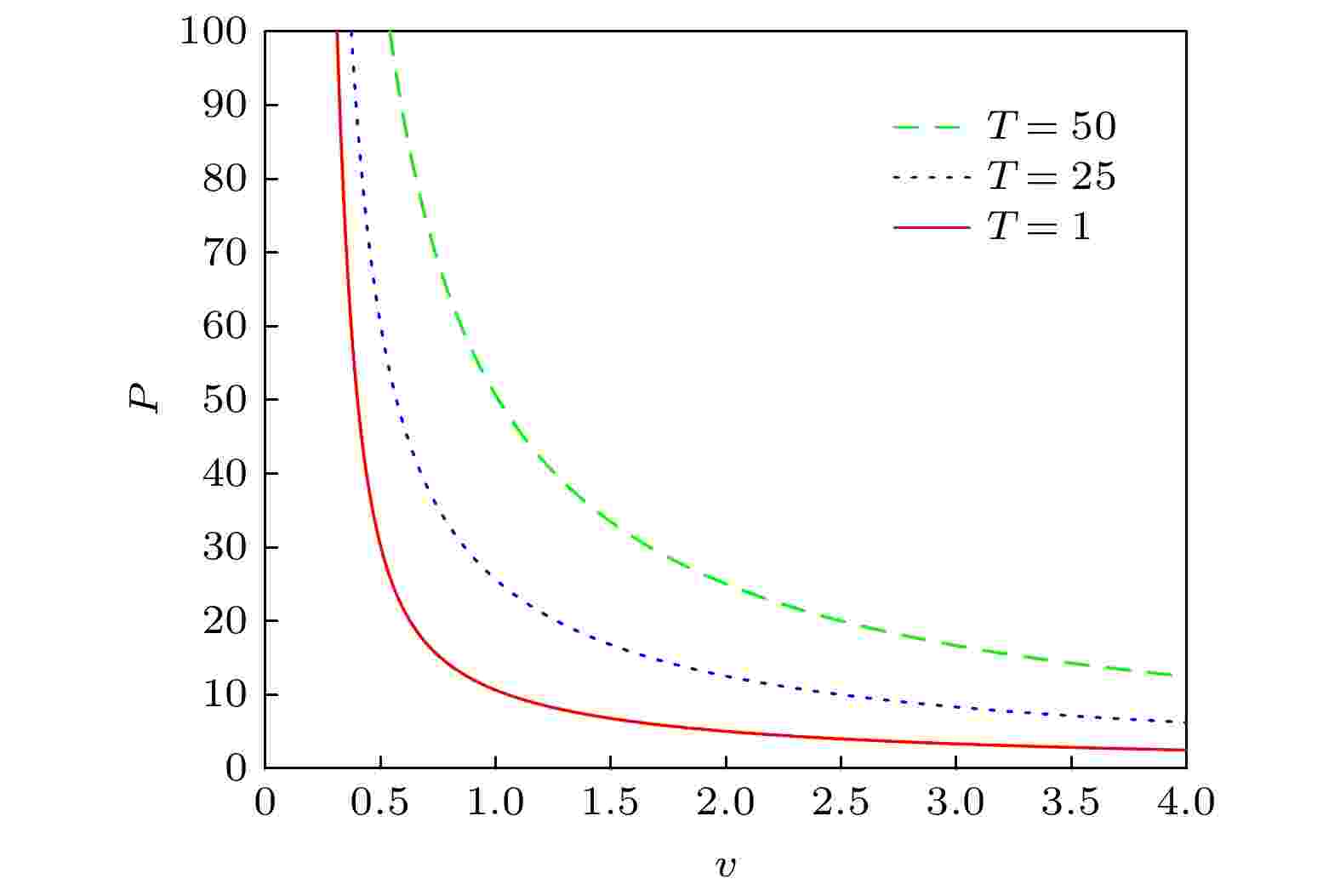
2022, 71 (11): 110401.
doi: 10.7498/aps.70.20212370
Abstract +
The thermodynamic functions of toroidal black holes are investigated in this paper by taking the cosmological constant as a dynamic variable equivalent to the pressure. The equation of state and the Smarr relation of a toroidal black hole are given. Then, the Gibbs function is obtained by calculating the Euclidian action. Further we study other thermodynamic functions of the toroidal black hole, such as free energy, internal energy, and thermodynamic enthalpy. The heat capacity of the toroidal black hole at constant pressure and constant volume is obtained. The results show that toroidal black holes have no van der Waals type phase transition. Toroidal black hole is a stable thermodynamic system because its heat capacity at constant pressure is greater than zero and its heat capacity at constant volume is equal to zero.
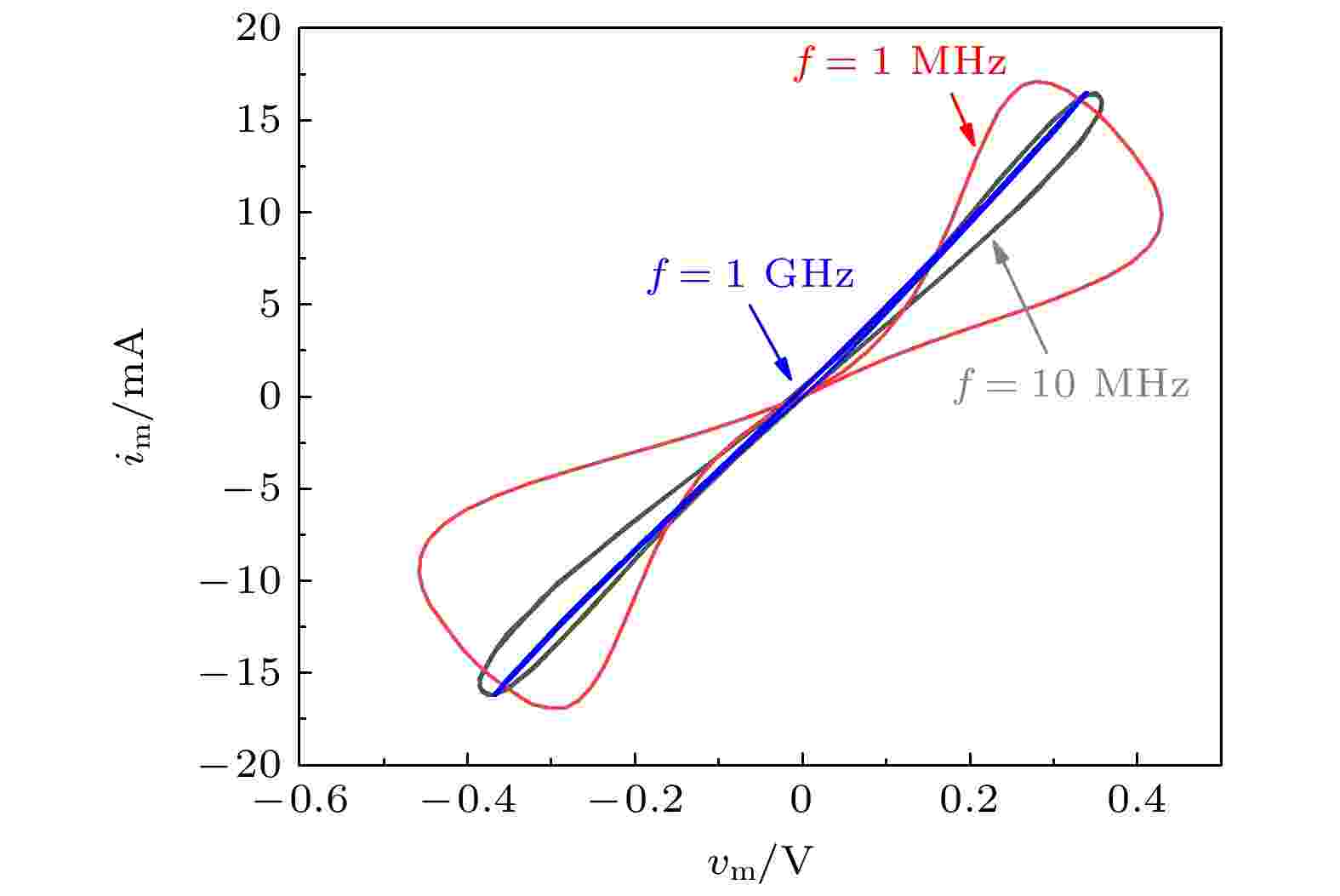
EDITOR'S SUGGESTION
2022, 71 (11): 110501.
doi: 10.7498/aps.71.20220141
Abstract +
NbOx memristors show great application prospect in neuromorphic computing due to its nanoscale size, threshold switching, and locally active properties. The in-depth analysis and study of NbOx memristors’s dynamic properties are beneficial to the design and optimization of memristive neuron circuits. In this paper, based on the local active theory, the physical model of NbOx memristor is studied by using the small signal analysis method, and the region and conditions of the peak oscillation are quantitatively analyzed, and the quantitative relationship between the excitation signal amplitude and the peak frequency is determined. Based on the above theoretical analysis, NbOx memristor neurons are further designed and combined with the memristive synaptic crisscross array in order to construct a 25×10 spiking neural network (SNN). Finally, the recognitional function of digital 0 to 9 patterns is effectively realized by using frequency coding and time coding respectively.

2022, 71 (11): 110502.
doi: 10.7498/aps.71.20220021
Abstract +
It is observed in cardiac patients that the steepnesses of action potential duration (APD) restitution curve of cardiomyocytes in different regions of the ventricle are significantly different from region to region. However, the steep APD restitution curve can either lead the spiral wave to break up and set up the ventricular fibrillation in certain conditions or result in no breakup of spiral wave in other conditions. The relationship between the dynamic behavior of spiral wave and steep APD restitution curve is still not completely clear. Therefore, further research is needed. In this paper, a two-dimensional excitable medium cellular automata model is used to study the influences of the APD restitution curves with different steepnesses on the dynamic behavior of spiral wave. Numerical simulation results show that the steep APD restitution curve can stabilize the meandering spiral wave, causing the stable spiral wave to roam or break, and even to disappear. When the total average slope of APD restitution curve is greater than 1, it is observed that spiral wave may be still stable or meandering. When the total average slope of APD restitution curve is much smaller than 1, the breakup of spiral waves may occur. Three types of spiral wave breakups are observed. They are the Doppler instability, Eckhaus instability, and APD alternation. The Doppler instability and Eckhaus instability are related to the total average slope of APD restitution curve greater than 1, and the spiral wave breakup caused by APD alternans may occur when the total average slope of APD restitution curve is much smaller than 1. When the total average slope of APD restitution curve is greater than 1, the phenomena that spiral waves disappear by meandering out of the system boundary and conduction barriers are observed. In addition, we also find that increasing cellular APD is beneficial to preventing spiral wave from breaking up. The physical mechanisms behind those phenomena are heuristically analyzed.
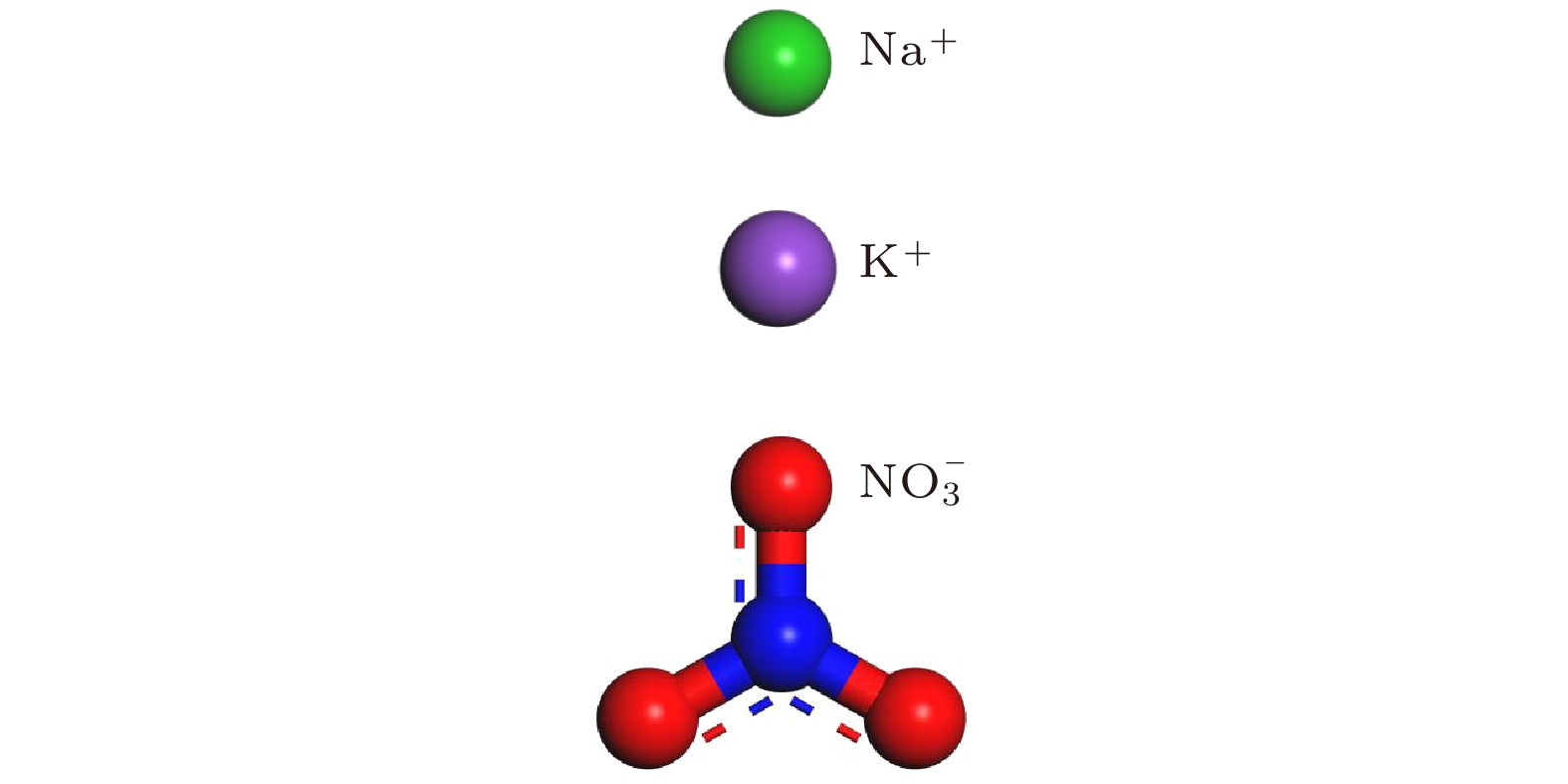
2022, 71 (11): 110503.
doi: 10.7498/aps.71.20212388
Abstract +
The effects of mesoporous size and structure on the solidification characteristics of solar salt are simulated by molecular dynamics (MD). The mixed nitrate model with different scales and two structures is established by using Material Studio software, and the model is applied to the Lammps software package for simulation calculation. The changes of freezing point, supercooling, and phase transformation latent heat are summarized. The micro mechanism of solidification characteristics of nano solar salt is analyzed by radial distribution function, potential energy temperature curve and Gibbs free energy theory. The results show that the freezing point of solar salt first increases and then decreases with the increase of nanopore scale. The nanowire structure will also increase the phase transition temperature on the same scale, and the phase transition points of the two eventually tend to be stable with the increase of scale. The supercooling of solar salt decreases with the increase of mesoporous scale, but there is an abnormal increase. Under the two different structures, the solidification enthalpy gradually decreases with the increase of scale, and the phase transition latent heat of nanowire solar salt is 30%–37% higher than that of nanoparticle structure on the same scale.

2022, 71 (11): 110504.
doi: 10.7498/aps.70.20212183
Abstract +
Ostwald ripening refers to a process of a particle/droplet/bubble system under local thermal equilibrium state adjusting the size distribution spontaneously to reduce the total surface energy. A lattice Boltzmann approach is used to simulate the ripening process of a two dimensional vapor bubble cluster dominated by phase transition kinetics. By comparing the numerical results with the theoretical prediction derived in two-dimensional space, it is shown that the lattice Boltzmann method is accurate in the simulations. The results also indicate that the mass transfer in liquid phase is driven by hydrodynamic pressure distribution and the hydrodynamic collapse of the bubbles influences the size distribution function in a small size region. The influence of the parameters in the equation of state of the material is studied further. A positive relation between phase transition speed and specific internal energy is proposed, which enhances the thermal fundamental of phase transition.
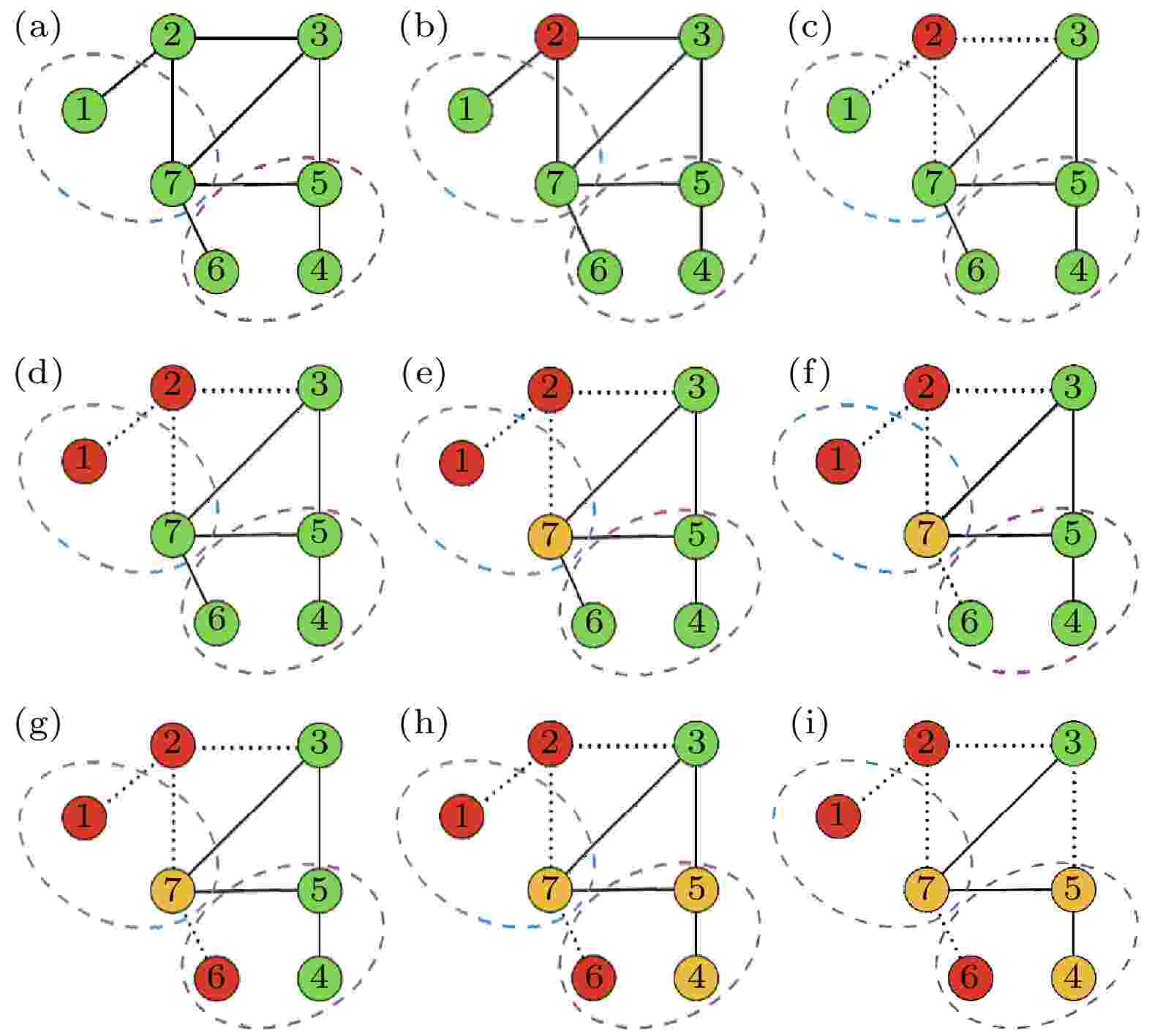
2022, 71 (11): 110505.
doi: 10.7498/aps.70.20210850
Abstract +
In real complex systems, the overall function is maintained through the connections among nodes. Failures of some nodes may destroy the connectivity of the system and thus damage the function of the system. In some complex systems, some nodes can form “interdependency groups” through hidden interdependency. The failure of one node may damage the rest of the nodes in the interdependency group. In this paper, we investigate the effects of the interdependency strength of the nodes, the size distribution, and the size of the interdependency groups on the cascading dynamics and the robustness of complex networks. Through numerical simulation and theoretical analysis, it is found that the cascading failures of the networks can be divided into two processes at a scale level: “intra-group cascading” and “inter-group cascading”. In the intra-group cascading process, the failure of one node will result in damage to the other nodes in the group through the interdependence among nodes, thus inducing more nodes to be unworkable and resulting in greater destructive force. In the inter-group cascading process, the failed nodes will cause the networks to be fragmented, which leads some nodes outside the interdependency group to isolate from the giant component and go to failure. Under the synergistic effects of these two processes, it is found that there are continuous and discontinuous phase transition phenomena in the cascade dynamics of the network. The occurrence of these two kinds of phase transition phenomena is related to the interdependency strength of nodes, the network degree distribution and the size distribution of the interdependency group. This means that by controlling the characteristics of interdependency groups, such as the interdependence strength of the nodes in the interdependency group or the size distribution of interdependency groups, the system can avoid collapsing suddenly and thus the robustness of the network can be improved.

EDITOR'S SUGGESTION
2022, 71 (11): 110701.
doi: 10.7498/aps.71.20220099
Abstract +
When capturing images under low-light lighting conditions, the resulting images often suffer low visibility. Such low-visibility images not only affect the visual effect but also cause many difficulties in practical application. Therefore, image enhancement technology under low-light conditions has always been a challenging problem in image algorithms. Considering that most of the existing image enhancement methods are based on the RGB color space enhancement technology, the correlation among the RGB three primary colors is ignored, which makes the color distortion phenomenon easy to occur when the image is enhanced. To solve the problems of poor image visibility and color deviation under low-light conditions, in this paper an advanced Retinex network enhancement method is proposed. In the method, firstly the low-light RGB image is transformed into HSV color space, the Retinex decomposition network is used to decompose and enhance the value component separately, and thus increasing the resolution of the value component through up-sampling operation; then, for the hue component and saturation component, the nearest neighbor interpolation is used to increase their resolutions, and the enhanced value component is combined to convert back to RGB color space to obtain the initial enhanced image; finally, the wavelet transform image fusion technology is used to fuse with the original low-light image to eliminate the over-enhanced part in the initial enhanced image. The analysis of experimental results shows that the method proposed in this paper has obvious advantages in brightness enhancement and color restoration of low-light images. Especially, comparing with the original Retinex network method, the NIQE value decreases by an average of 19.49%, and the image standard deviation increases by an average of 41.35%. The algorithm proposed in this paper is expected to be effectively used in the fields of security monitoring and biomedicine.

2022, 71 (11): 110702.
doi: 10.7498/aps.71.20212351
Abstract +
For an inertial-confinement-fusion cryogenic target, the fusion ice layer inside the capsule should have a uniformity more than 99% and an inner surface roughness less than 1 μm (root mean square) to avoid Rayleigh-Taylor instabilities. And this highly smooth ice layer required for ignition is generated in the presence of volumetric heat and affected by the thermal environment around the capsule. For the D2 fuel targets, the uniformity of the fusion ice layer inside the capsule is consistent with the uniformity of the surface temperature around the capsule, and the latter can be controlled by directional infrared illumination. A major challenge of directional infrared illumination is the precision of directional infrared spatial distribution. In this paper, a numerical model coupling the directional infrared tracking and temperature field calculation is proposed and validated by experimental results. A three-dimensional physical model of the cryogenic target is used to study the influences of different forms of directional infrared spatial distribution errors on the temperature uniformity of the capsule. The results show that the eccentricity of IR band axis has the worst effect on the temperature uniformity of the capsule, followed by the distance between both IR bands, and the width of the IR band has the least effect on the temperature uniformity of the capsule. Therefore, the eccentricity of IR band axis should be avoided in experiment to ensure the uniformity of the temperature of the capsule, further ensuring the uniformity of the fuel ice layer inside the capsule.
NUCLEAR PHYSICS

2022, 71 (11): 112901.
doi: 10.7498/aps.71.20212112
Abstract +
SESRI 300 MeV synchrotron in Harbin Institute of Technology is now under construction and the whole equipment has been installed and tested. Before commissioning beam, the beam transport through the injection line is simulated by using a full-scall model through the Tracewin code. The field distribution of RFQ cavity is calculated with CST, and the results are substituted into the Tracewin code to generate the accurate results. The envelop mode and multi-particles mode are used in the beam simulation with two typical beams (H${}_2^+ $ and 209Bi32+, the lightest beam and the heaviest beam). Both beams are accelerated from 4 keV/u to 2 MeV/u by an RFQ cavity and two IH-DTL cavities. Then the H${}_2^+ $ beam is stripped into a proton beam by a carbon foil and accelerated to 5.6 MeV with the third IH-DTL cavity. Simulation results show that the strength of the magnetic field and the acceleration field are proportional to the mass charge ratio. The beam transmission efficiency and the injection line reception are inversely proportional to the beam transverse emittance. The 209Bi32+ beam transmission efficiency and beam reception (momentum spread less than ±0.2%) are 72.16% and 46.72% with transverse emittance ε = 0.12π mm·mrad (ECR source output) and ε = 0.4π mm·mrad (RFQ output). H${}_2^+ $ beam transmission ratio and beam reception are 24.19% and 17.89% with ε = 0.2π mm·mrad (ECR source output) and ε = 0.5π mm·mrad (RFQ output). In order to obtain high transmission efficiency and beam reception, the transverse emittance should be limited to 0.1π mm·mrad after the RFQ. With this limitation, the 209Bi32+ beam transmission efficiency and the reception are increased to 96.68% and 92.63%, respectively, and the H${}_2^+ $ beam transmission efficiency and the rception rise to 74.40% and 68.18%, respectively. If two additional quadrupole magnets are added, the H${}_2^+ $ beam transmission efficiency and beam reception can be increased to 90.73% and 83.61%, respectively, which will fulfill the requirement for long-time operation. The phase space change process shows that loss of 209Bi32+ beam is caused mainly by longitudinal defocusing (energy spread and phase width spread), the loss of proton beam is caused both by the longitudinal defocusing and by the transverse defocusing (beam envelop spreading), that is why two additional focusing magnets should be added in proton beam acceleration. Results also show that by using field distribution calculation in the simulation process the greater influence of the cavity design details can be confirmed such as beam off-axis caused by dipole field in the IH-DTL cavity and beam loss caused by unperfect field in the RFQ. Tracking with field distribution is shown to be a useful method to link the cavity design process, beam line design process, and beam commission process.
ATOMIC AND MOLECULAR PHYSICS
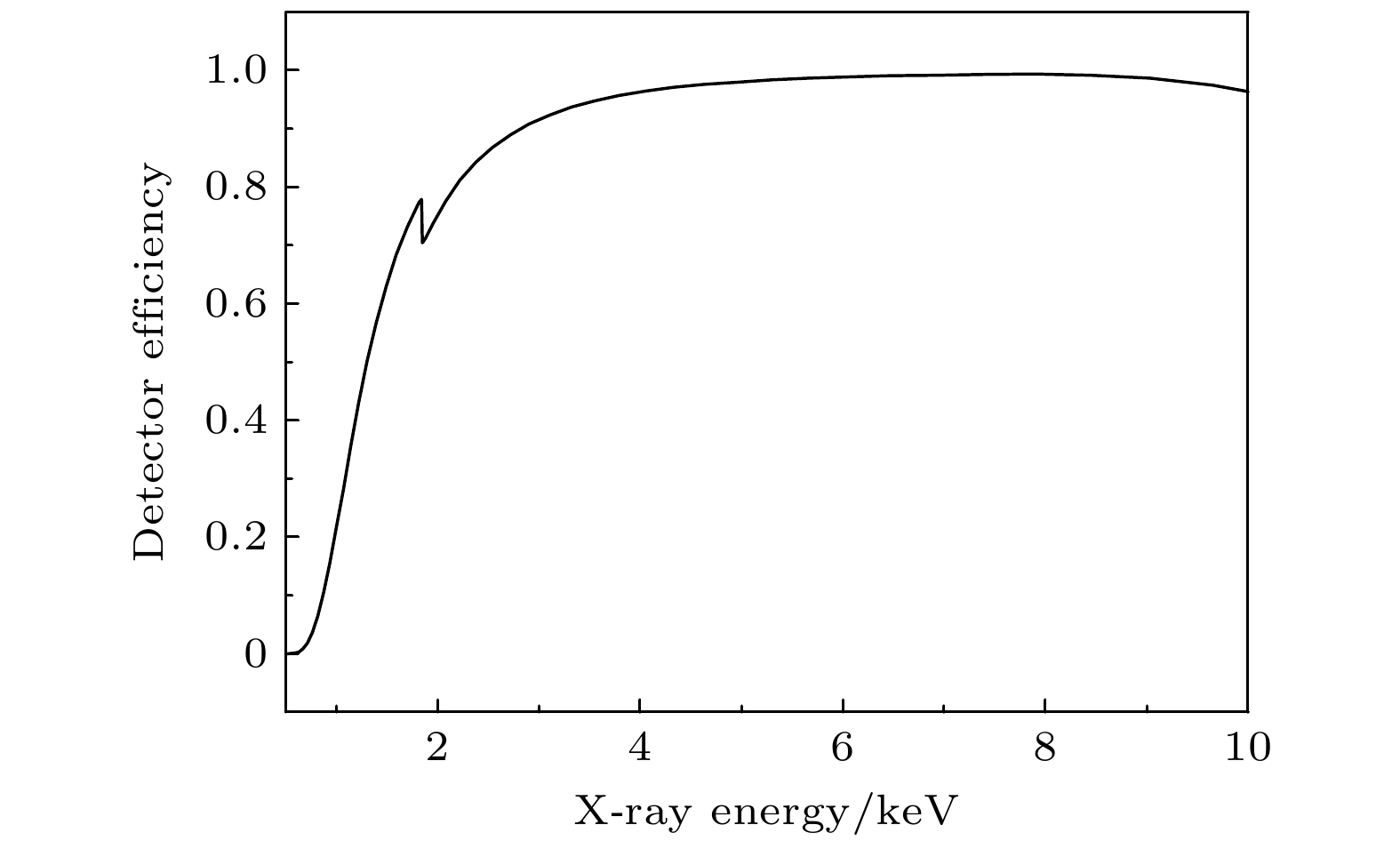
2022, 71 (11): 113201.
doi: 10.7498/aps.70.20212322
Abstract +
The L-shell X-ray emission of tungsten is investigated under the bombardment of C6+ ions in a high energy range of 154—424 MeV/u. Compared with the atomic data, the energy of the X-ray is enlarged, and the relative intensity ratio of Lι, Lβ1,3,4 and Lβ2,15 to Lα1,2 X-rays are enhanced. The L-subshell and the total X-ray production cross section are calculated from a well corrected thick target formula and compared with the theoretical estimation of binary encounter approximation (BEA), plane-wave Born approximation (PWBA) and ECPSSR (PWBA theory modified with Energy-loss, Coulomb-repulsion, Perturbed-Stationary-State and Relativistic corrections). On the whole, the experimental cross sections are all smaller than the prediction of PWBA and ECPSSR, but in rough agreement with that of BEA. It is indicated that the inner-shell ionization of W can be considered as a binary process between the high energy C6+ ions acting as a point charge and the independent target electrons. With the L-shell ionization, the outer-shells are multiply ionized. The multi-ionization degree is approximately regard as a constant in the present work. This leads the X-ray energy to be blueshifted and the relative intensity ratios of Lι and Lβ to Lα X-ray to be enhanced. Using the atomic parameters corrected by multi-ionization, the X-ray production cross section can be estimated by the BEA model.

2022, 71 (11): 113701.
doi: 10.7498/aps.71.20220113
Abstract +
Cold atom gravimeter is gradually developing towards miniaturization, dynamics and practicality. It is of great significance to apply it to deep and far sea absolute gravity measurement and underwater long navigation time and high-precision navigation. At present, most cold atom gravimeters are still in the state of laboratory static base or quasi-static base measurement, which is difficult to meet the gravity measurement needs in dynamic application scenarios. Therefore, the research on "static to dynamic" of cold atom interferometric gravity measurement is very urgent and key. In this paper, the basic principle of dynamic measurement is analyzed, the basic method of combined measurement of cold atom gravimeter and accelerometer is given, a set of absolute dynamic gravity measurement system based on cold atom gravimeter and inertial stabilization platform is built, and the ship-borne dynamic measurement experiment is carried out by using the combined measurement method of cold atom gravimeter and traditional accelerometer. Firstly, the continuous absolute gravity measurement for about 40 h is carried out in the laboratory static environment to preliminarily evaluate the performance of the cold atom gravimeter. The sensitivity is 447 µGal/$\sqrt {{\text{Hz}}} $ , and the long-term stability can reach 2.7 µgal. On this basis, the ship-borne experiment is conducted, the survey ship sails on the lake at a speed of about 4.6 kn, and the ship-borne absolute dynamic gravity measurement is carried out by means of repeated survey lines. After evaluation, the internal coincidence accuracy of the four repeated survey lines is 2.272 mGal, and the external coincidence accuracy values of the four voyages are 2.331, 1.837, 3.988 and 2.589 mGal respectively. Finally, according to the experimental results, the possible problems are further analyzed and summarized. This experimental study provides preliminary verification and technical scheme reference for marine absolute dynamic gravity measurement.
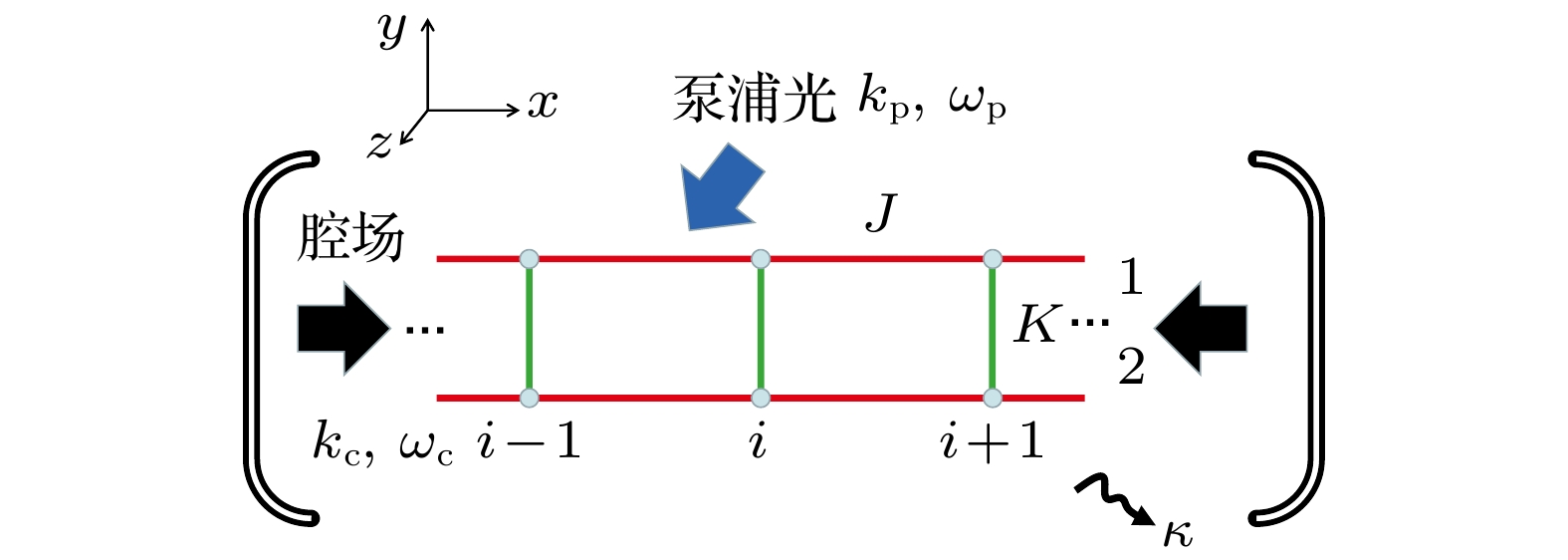
EDITOR'S SUGGESTION
2022, 71 (11): 113702.
doi: 10.7498/aps.71.20212246
Abstract +
We study a Bose-Einstein condensate trapped by a ladder lattice in a high-fitness cavity. The ladder lattice is loaded in the $x\text-y$ plane and the cavity is along the x direction. A pump laser shines on atoms from the z direction. Under the mean-field approximation, we consider the emergence of the quasi-periodic potentials induced by superradiance in the ladder lattice, which is described by $\hat{H}_{\text{MF}}=\hat{H}_{\text{Lad}}+\hat{V}_{\text{eff}}$ with the effective potential $\hat{V}_{\text{eff}}(\alpha)={\displaystyle \sum\nolimits_{i = 1}^{N}}\displaystyle \sum\nolimits_{\sigma = 1,2}\left[\lambda_{\rm{D}}\cos({2\pi\beta i})+U_{\rm{D}}\cos^{2}({2\pi\beta i})\right]\hat{c}^{†}_{i,\sigma}\hat{c}_{i,\sigma}$ . We find that the quasi-periodic potential can induce the reentrant localization transition and the regime with mobility edges. In the smaller $U_{\rm{D}}$ case, the system exhibits a localization transition. The transition is associated with an intermediate regime with mobility edges. When $U_{\rm{D}}$ goes beyond a critical value $U_{\rm{D}}^{(\rm c)}$ , with the increase of $\lambda_{\rm{D}}$ , the system undergoes a reentrant localization transition. This indicates that after the first transition, some of the localized eigenstates change back to the extended ones for a range of $\lambda_{\rm{D}}$ . For a larger $\lambda_{\rm{D}}$ , the system experiences the second localization transition, then all states become localized again. Finally, the local phase diagram of the system is also discussed. This work builds a bridge between the reentrant localization and the superradiance, and it provides a new perspective for the reentrant localization.
ELECTROMAGNETISM, OPTICS, ACOUSTICS, HEAT TRANSFER, CLASSICAL MECHANICS, AND FLUID DYNAMICS
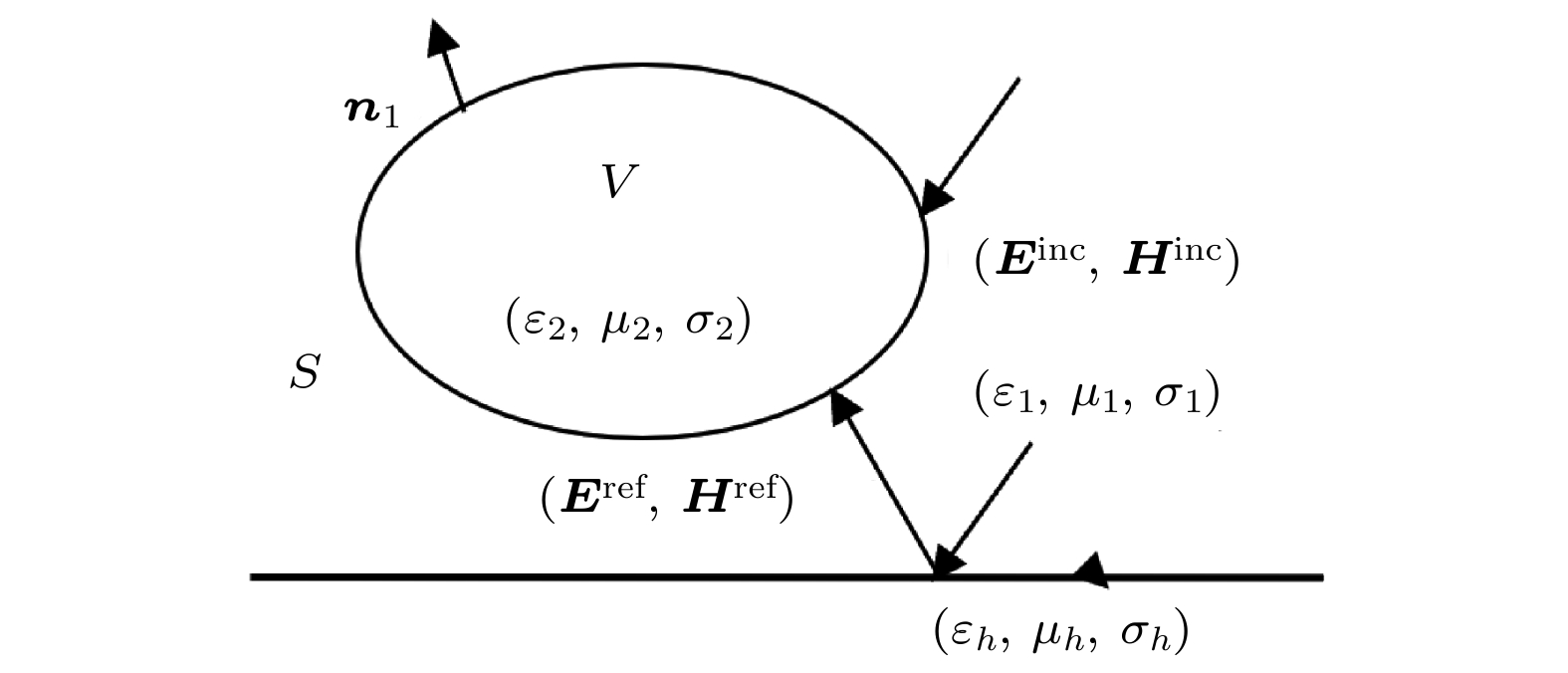
2022, 71 (11): 114101.
doi: 10.7498/aps.71.20212152
Abstract +
A new acceleration method is proposed for efficiently solving the problem of electromagnetic scattering from metal targets in half-space. The analysis of electromagnetic problems in any structure can be settled by the electric field integral equation. But the generated matrix condition number is large and the iterative solution has poor convergence. The number of the matrix condition generated by the magnetic field integral equation is small and iterative convergence is good. But only the closed structure problems can be worked out. The combined field integral equation is adopted because of the universality of the electric field integral equation and the convergence of the magnetic field integral equation. The gradient term of Green's function is involved in the integral equation of the mixed field. In order to further enhance the calculation efficiency, an efficient four-dimensional spatial interpolation method is introduced for half-space Green's function. Tabulation and lagrange interpolations are performed in the Sommerfeld integrals for the half-space Green's function. The improved efficiency can be 7.5 times higher than that of the traditional combined field integral equation(CFIE). Numerical results show that the computational time can be reduced significantly by the proposed method with encouraging accuracy.
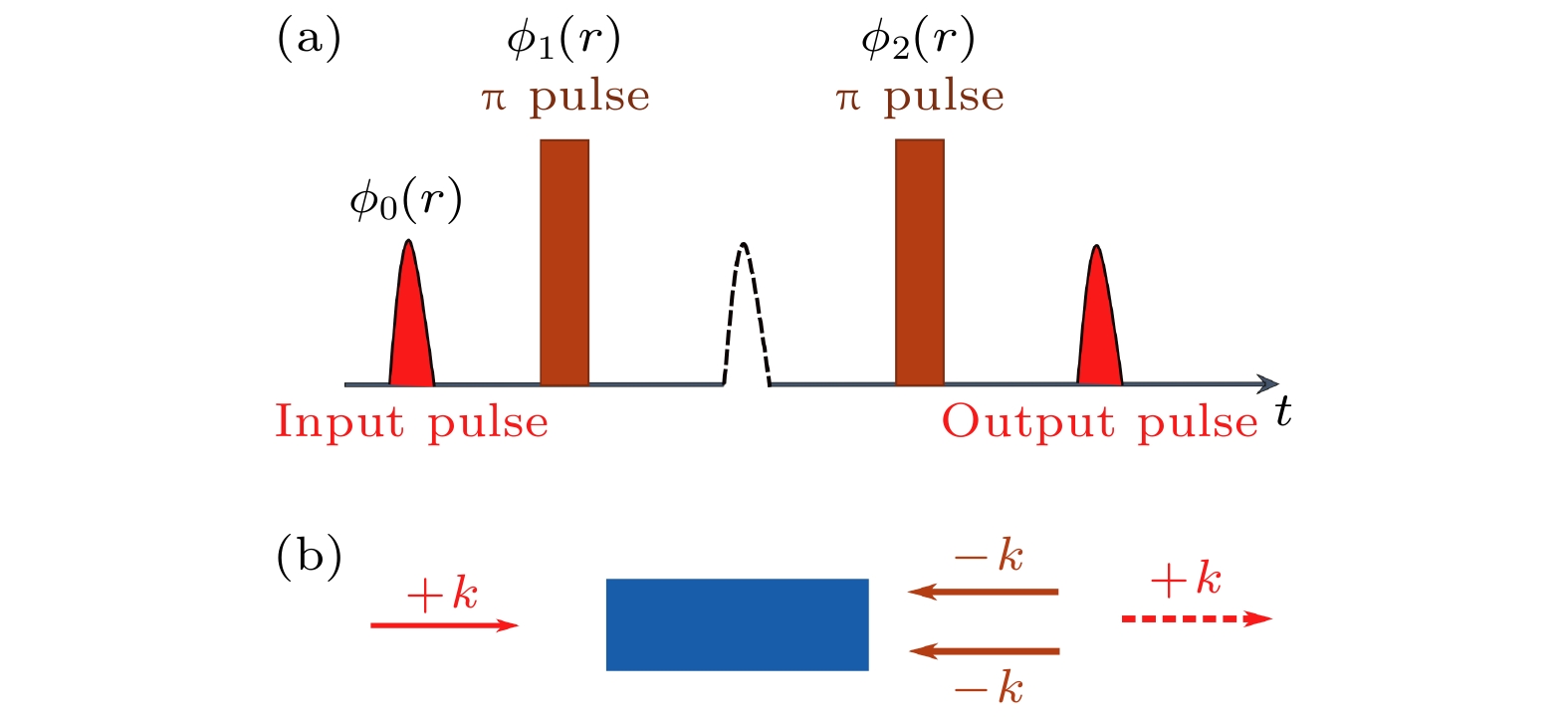
EDITOR'S SUGGESTION
2022, 71 (11): 114201.
doi: 10.7498/aps.71.20220083
Abstract +
Like internet, connecting quantum computers together to build a full quantum network will enhance the ability to process quantum information. On-chip quantum memories can possess the essential functionalities in building a quantum network, including synchronizing a large number of quantum computers and implementing long-distance quantum communication. However, owning mainly to the constraints imposed by the micro-photonic structures themselves, on-chip quantum memories cannot satisfy the requirement for constructing the full quantum network for the incompatibility of their memory property and integration property. We here propose to build an on-chip quantum memory by using spatial-phase-mismatching effect in photonic crystal cavities. In this scenario, not only is the large orbital angular momentum of photonic crystal cavities utilized to realize photon-echo type memory, but also the light-matter enhancement of a photonic cavity is used to achieve a high-efficiency quantum storage.
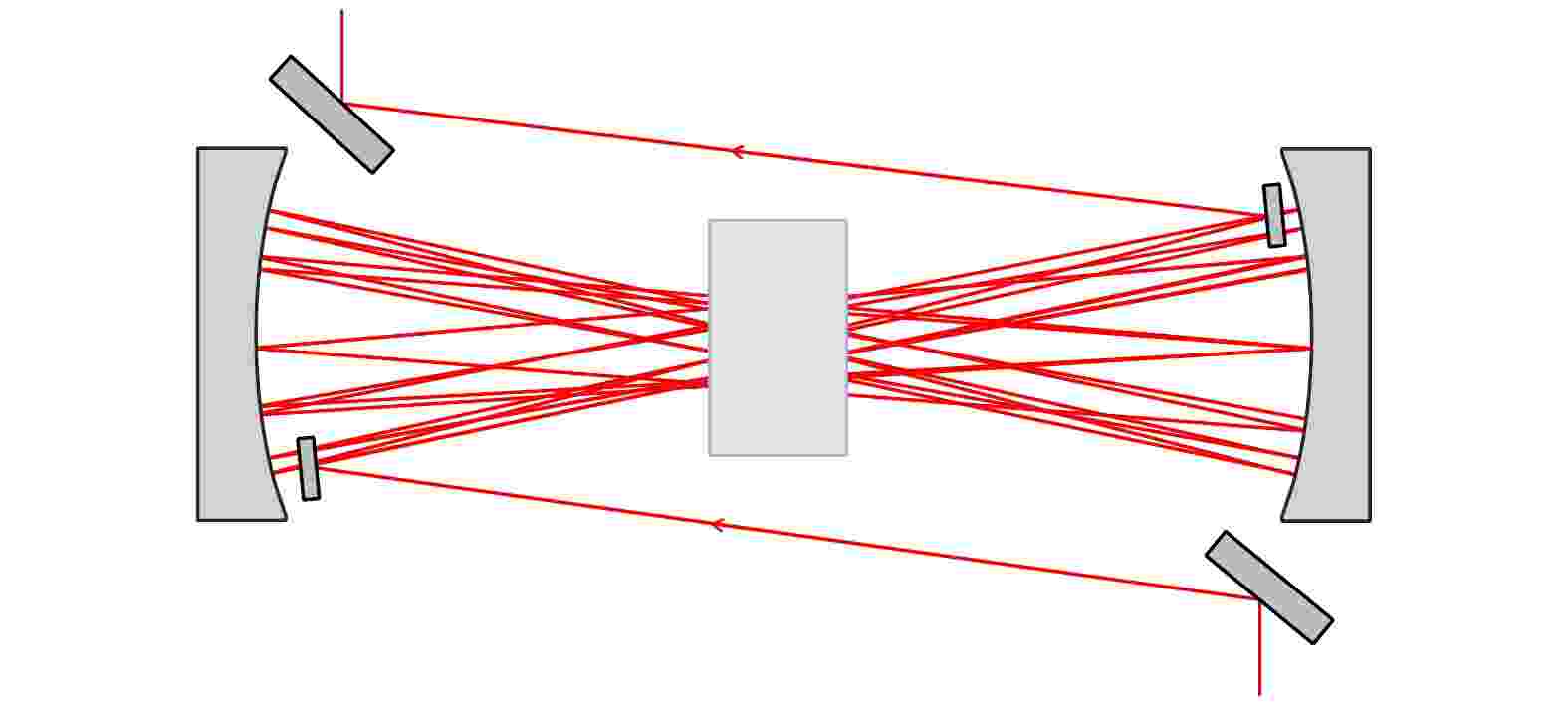
EDITOR'S SUGGESTION
2022, 71 (11): 114202.
doi: 10.7498/aps.71.20212381
Abstract +
We report a femtosecond chirped-pulse amplification (CPA) system based on block material stretcher and grism compression. An optical material block is employed in Herriott multi-reflection configuration as a pulse stretcher, and a transmission grating is combined with dispersion prism to form grism as a compressor which can provide the negative second and third-order dispersion. By optimizing the prism vertex angle and grating line density, the grism can completely compensate for the third-order material dispersion. We obtain shorter compressed pulses. In the experiment, the stretched pulses are amplified by regenerative amplifier, which amplifies the 800 nm seed pulse to 2.30 W under the 11.4 W, 527 nm, 1 kHz pumping conditions, and the spectral width of the amplified pulse is 26.7 nm. The amplified pulses are compressed to 39.6 fs, which is close to the Fourier transform limit of 35.2 fs. The design of the system simplifies the structure of the conventional chirped pulse amplification system, reduces the space size of the optical path, and improves the operational stability of the laser system. With the block material stretcher and grism compressor, the whole CPA laser system is very compact and can be used as a reliable light source for subsequent amplification as well as ultrafast phenomenon studies.
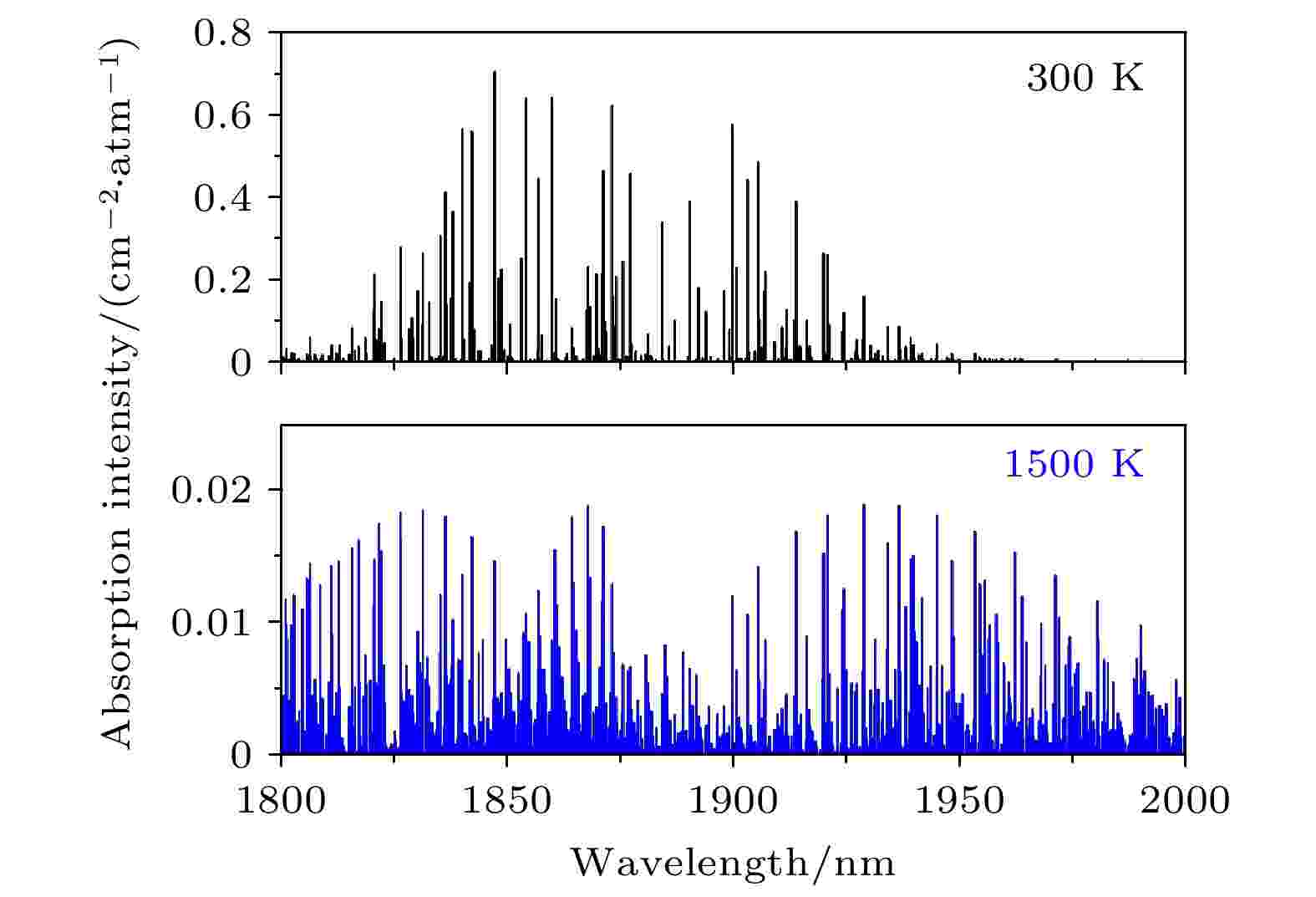
EDITOR'S SUGGESTION
2022, 71 (11): 114203.
doi: 10.7498/aps.71.20212127
Abstract +
The 1.8–2.0 μm waveband contains abundant absorption lines of water, which are much stronger than those in the traditional 1.3–1.5 μm waveband, exhibiting huge potentials for absorption spectrum applications of water. In the hyperspectral absorption spectrum, physical parameters of the target molecule can be derived from lots of absorption lines within a broadband scanning range, achieving the results more robust, accurate and versatile than the results from the conventional tunable diode laser absorption spectrum in which only one or two absorption lines are used. The key to hyperspectral absorption is the development of broadband tunable, narrow linewidth laser sources emitting in the wavelength range of interest. With a tunable fiber FP filter and a fiber saturable absorber, a Tm-doped fiber laser is established, featuring broadband tenability and narrow linewidth. Taking advantage of the re-absorption characteristics of Tm-doped silica fibers, a wavelength tuning range covering 60 nm from 1910–1970 nm is obtained through the appropriately designing of the active fiber length. The measured laser linewidth at steady state is smaller than 0.1 nm, which is suitable for water absorption spectrum. Hyperspectral absorption measurements of water in air and alcohol flame are conducted. In room-temperature air, more than 40 absorption lines are recognized within a tuning range of 1910–1965 nm, while, in alcohol flame, the number of detected lines reaches about 50. Comparison with the HITRAN2016 database gives a laser linewidth of about 0.06 nm which is very close to the static linewidth measured by an OSA. The temperature of the air is derived to be 298 K with a water mole fraction of about 2%, which is consistent with the measurement of the hygrothermograph. And the calculation indicates an alcohol flame temperature of about 1220 K, which is very close to the measurement result of the thermocouple.
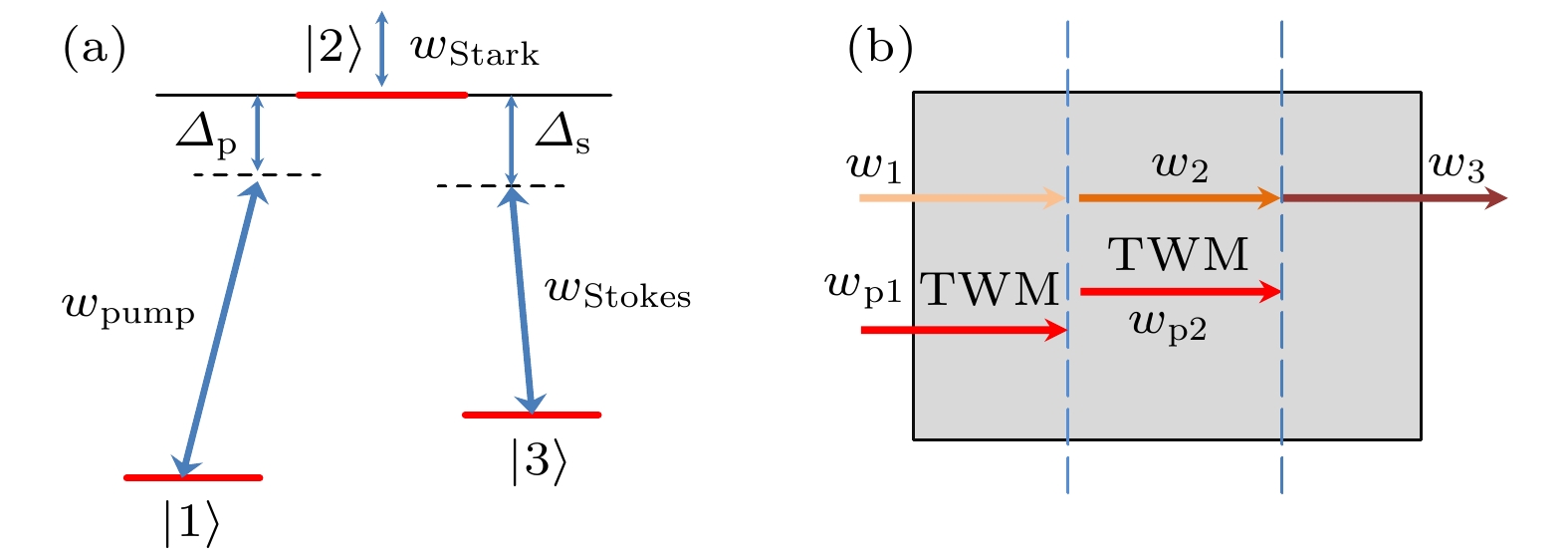
2022, 71 (11): 114204.
doi: 10.7498/aps.71.20210887
Abstract +
The nonlinear wavelength conversion can generate the laser wavelengths which are not directly available, thereby broadening the laser spectrum range. However, the phase mismatch greatly limits the development and application of nonlinear optical technology. The wavelength conversion schemes in a manner analogous to population transfer in atomic rapid adiabatic passage, stimulated Raman adiabatic passage (STIRAP), and Stark chirped rapid adiabatic passage (SCRAP) provide feasible solutions for efficient and broadband wavelength conversion. The SCRAP uses the Stark shift caused by the Stark field to generate energy level crossings, therefore, the population in initial state can be efficiently converted into the target state. It does not require the two-photon resonance, and can be applied to multi-photon transition. In this paper, by approximate analogy to the adiabatic population theory, a wavelength conversion model with the KTP crystals based SCRAP is established, the influence of the coupling delay parameters, width parameters, pump intensity, temperature, and incident wavelength on the conversion process are systematically studied. The results show that the signal laser energy can be almost converted into output laser energy, while the intermediate laser energy is kept extremely low in the conversion process. The conversion process is sensitive to changes in coupling delay parameters, width parameters, and pump intensity. The farther away fromits optimal value the coupling delay parameter, the lower the conversion efficiency is. When the width parameter $ d_2^2 $ is fixed, as the width parameter $ d_1^2 $ increases, the conversion efficiency first increases to a maximum value, and then slowly decreases. At the same time, the greater the value of the width parameter $ d_2^2 $ , the greater the achievable maximum conversion efficiencies, and the greater the bandwidth that can achieve high-efficiency wavelength conversion. The conversion efficiency increases as the pump intensity increases. When the conversion efficiency value reaches a maximum value, the increase in pump intensity has almost no effect on the conversion efficiency. However, changes in temperature and incident wavelength have little effect on the conversion efficiency. The above research can provide a theoretical basis for the acquisition of ultraviolet to mid-infrared light sources and the manufacture of photonic devices.
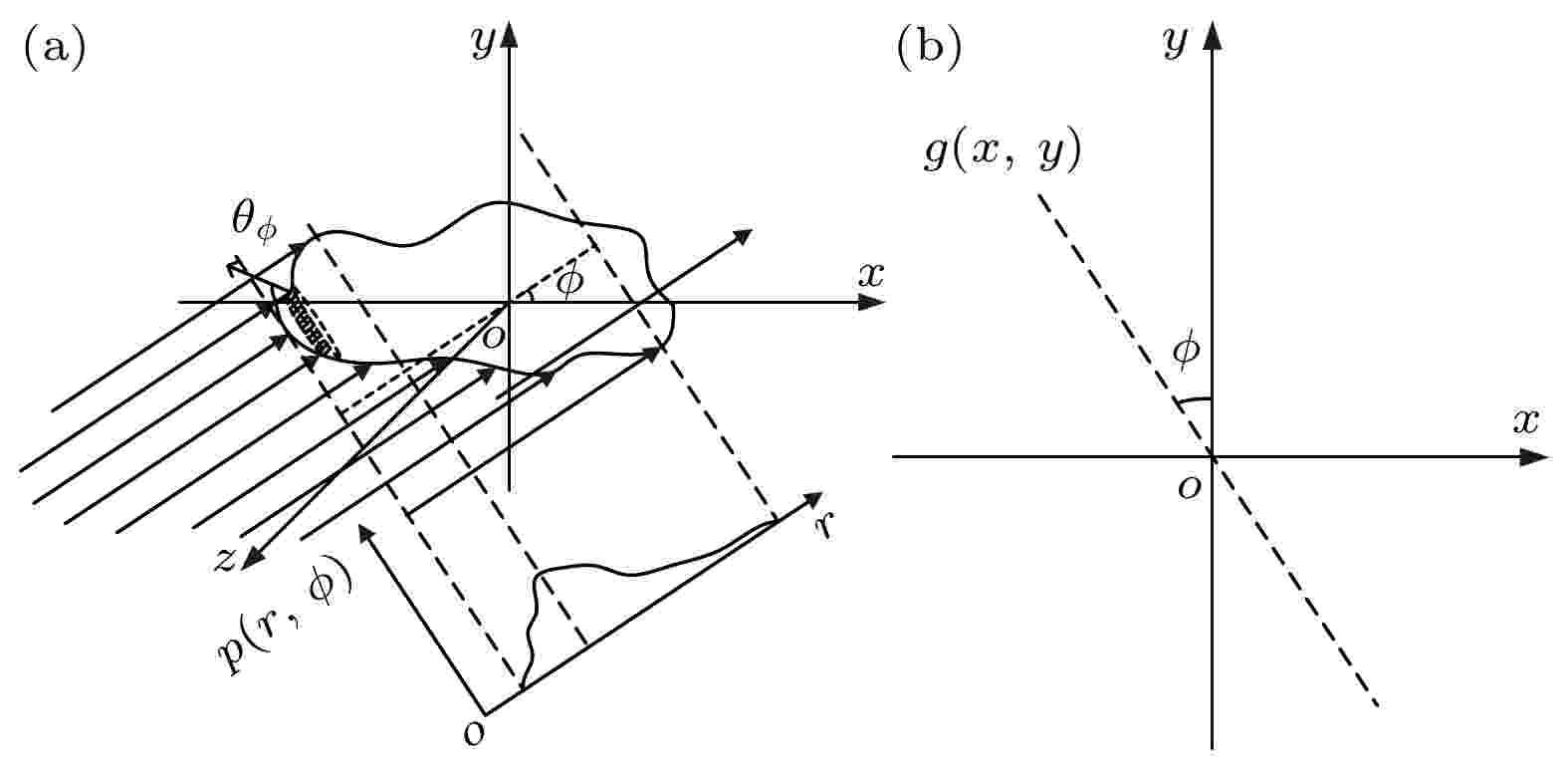
2022, 71 (11): 114205.
doi: 10.7498/aps.71.20220205
Abstract +
Removal of the numerous centimeter-level space debris in low Earth orbit by using high-power lasers is always a hot topic of international academic research. Specifically, the precise positioning of space debris and high-precision measurement of barycenter range of debris are the key points and worldwide problems that need to be promptly solved. As a new remote high-resolution imaging method, laser reflective tomography is an effective approach to detecting the dark targets in remote space with its imaging resolution independent of the detection range. Hence, a centimeter-level space debris barycenter model is established according to the principle of laser reflective tomography in order to analyze the relative movement of debris and detector. On this basis, an approach to estimating the barycenter range of centimeter-level space debris is proposed to carry out the experimental verification of 1km detection range laser reflective tomography. The experimental results show that this method can improve the accuracy of barycenter detection from 1.50 cm to 0.34 cm, which is an effective measure for realizing high-precision measurement of barycenter ranges of centimeter-level space debris. Furthermore, this study achieves a breakthrough in kilometer-level laser reflective tomography experiments and theory of validation, and the kilometer-level laser reflective tomography has a great application prospect and technical potential.

2022, 71 (11): 114301.
doi: 10.7498/aps.71.20211932
Abstract +
In recent years, the vibration and noise reduction performance of military aircraft has become an important index to measure its performance. In order to solve the problem of low-frequency noise generated by military aircraft, a novel Helmholtz two-dimensional phononic crystal is constructed in this paper. The structure adopts maze-shaped air channel and adds rigid oscillators. On condition that the lattice constant is 62 mm, the lower limit of the first band gap is reduced to about 15 Hz. The structure has four complete band gaps in a range of 0–500 Hz, specifically, they being 15.223–17.464 Hz, 107.46–200.68 Hz, 231.18–310.68 Hz, and 341.14–404.49 Hz. In addition, the sound reduction index of the structure reaches 25 dB at 15 Hz, and two peaks higher than 150 dB appear at about 107 Hz and 231 Hz. which shows distinct sound insulation capability in the low-frequency range. It has engineering significance in controlling the low-frequency noise in the aircraft cabin. The cause of the band gap is explored by analyzing the vibration mode and sound pressure field. The “spring-oscillator” of the structure model is established by the method of “Mechanical-acoustic analogy”. The finite element method and transfer matrix method are used to calculate the upper limit and the lower limit of the first band gap. It is shown that for the first gap of the structure, the results obtained by the two methods are similar, which indicates the correctness of the model hypothesis. Secondly, the effects of structural parameters such as the lattice constant, the length of the air channel and the oscillator material on the first band gap are investigated by finite element method and equivalent model method. It is obtained that the increase of the length of air channel and lattice constant will reduce the lower limit of the first band gap, with other structural parameters remaining unchanged. Moreover, the increase of the density of the oscillator material can effectively reduce the upper limit and lower limit of the second band gap, which further reveals the essence of the formation of the band gap of the structure and verifies the accuracy of the equivalent model. This study provides theoretical support for low frequency noise control and broadens the design of low-frequency phononic crystals.

2022, 71 (11): 114302.
doi: 10.7498/aps.71.20211915
Abstract +
The acquisition of geoacoustic parameters is of great significance in studying ocean acoustics. On the basis of deducing the seabed reflection coefficient under the layered absorbing medium, the influence of the absorption coefficient on the seabed reflection coefficient under the condition of large grazing angles is analyzed. The seabed reflection coefficient oscillates at a frequency. When it is equal to the reflection coefficient of the contact interface between seawater and sediment, the corresponding frequency point is defined as the 1/4 oscillation period frequency. At this frequency, the coupling degree between absorption coefficient of sedimentary layer and substrate geoacoustic parameters is less than those at other frequencies. In this paper, a stepwise optimization inversion method for deep water geoacoustic parameters is proposed based on the seabed reflection characteristics of large grazing angles. Firstly, the interference period of the seabed reflection coefficient is extracted by the correlation method, and the sound speed and thickness of the deposited layer are inverted by the interference period. The density is obtained from the inversion result of sound speed combined with Hamilton empirical formula. Secondly, the value of the absorption coefficient of the sedimentary layer is calculated by combining the search boundary of the substrate sound speed. The one-dimensional inversion of the substrate sound speed is realized by using the substrate reflection coefficient at 1/4 oscillation period frequency. Finally, the one-dimensional inversion of the absorption coefficient of the sedimentary layer is realized by using the seabed reflection coefficient at a half-wave layer frequency. The seabed reflection characteristics of large glancing angles are combined with stepwise inversion to reduce the coupling degree of the substrate sound speed and the absorption coefficient of the sedimentary layer. Experimental results show that the geoacoustic parameters retrieved by this method can be effectively applied to the prediction of propagation loss in a certain range under the condition of large grazing angle measurement.
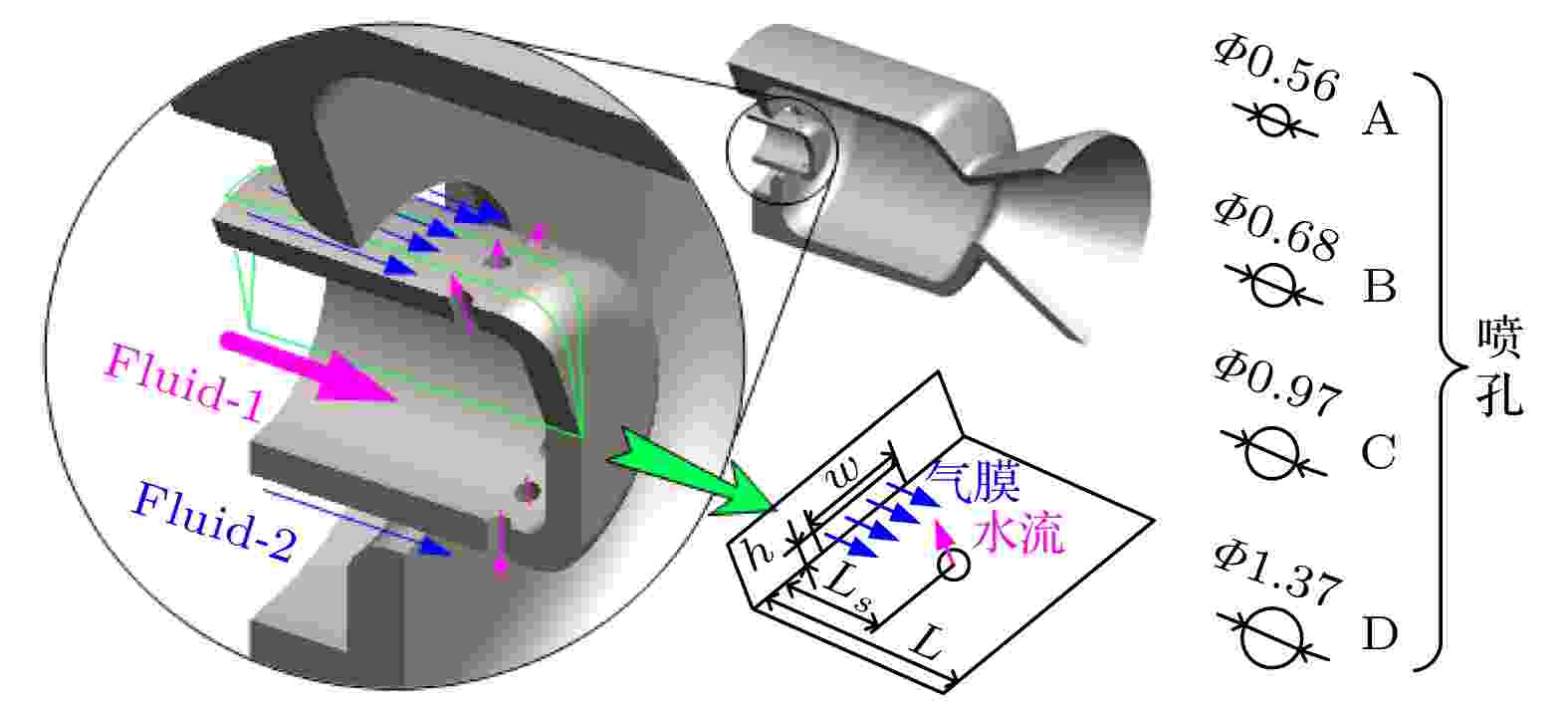
2022, 71 (11): 114701.
doi: 10.7498/aps.71.20212374
Abstract +
In order to understand the fragmentation and atomization characteristics of the liquid jet in transverse gas film, a pintle injection element using air and water as simulants is designed. The two-phase flow large eddy simulation and backlight imaging are used to study the liquid-jet breakup process and spray-field dynamic characteristics in the nearorifice area of pinte injection element under the atmospheric environment. The primary fragmentation process of the liquid jet dominated by surface wave is obtained by large eddy simulation, which reveals the establishment process of the spray field in near-orifice area of the gas-liquid pintle injector. After the subsonic airflow leaves the slit, it expands and accelerates into supersonic state. Then the deceleration and pressurization phenomenon occurs once the supersonic airflow passes through the detached bow shock upstream of the liquid jet. The liquid jet bends downstream due to the difference in pressure between upstream and downstream, and the Rayleigh-Taylor (R-T) unstable surface wave appears on the jet windward surface. As the surface wave develops, the penetration of the wave trough by airflow causes the continuous liquid jet to fragment. Proper orthogonal decomposition (POD) method can effectively reconstruct spray snapshot. The POD mode shows that the low-frequency spray oscillation in near-orifice area is caused by the overall expansion/contraction process of the spray field, while the high-frequency one is due to the “impact wave” movement of the liquid block or liquid mist group on the windward side. The latter is produced by the R-T unstable surface wave before the jet breakup, and can be categorized as traveling wave structure. The dimensionless traveling wave wavelength has a power-law relationship with Weber number.

2022, 71 (11): 114702.
doi: 10.7498/aps.71.20212133
Abstract +
Many industrial technologies, such as condensation cooling and fuel cells, require solid-liquid separation. Electrowetting is a very effective method of inducing droplets to detach from hydrophobic surfaces, and it is very convenient to control. The jumping of droplets excited by an electric field depends on the conversion of surface energy into kinetic energy and other forms of energy. At present, there is still a lack of in-depth research on this process. In this study, a high-speed camera is used to capture the jumping motion of a droplet on a hydrophobic surface under the actuation of electrowetting, and the threshold voltage that causes the droplet to detach is estimated based on the changes in contact angle and droplet shape. A self-written Matlab program is used to analyze and calculate the various forms of energy in the process of droplets detaching and subsequent bouncing. The results show that there is an obvious coupling relationship between the kinetic energy and potential energy of the droplet’s center of mass during the flight of the droplet from the surface. The vibrational kinetic energy and surface potential energy also show a certain coupling relationship during the flight phase. The internal dissipation caused by the viscosity of the droplet increases with the droplet oscillation amplitude increasing, and decays with time. Because it can cause the droplet to oscillate and deform and create more surface energy, AC pulses are more efficient than direct current in the droplet bounce. By revealing the energy conversion and dissipation mechanism in the process of droplet jumping driven by electrowetting, a theoretical reference is provided for the application of this technology in solid-liquid separation and three-dimensional digital microfluidics.
PHYSICS OF GASES, PLASMAS, AND ELECTRIC DISCHARGES

EDITOR'S SUGGESTION
2022, 71 (11): 115201.
doi: 10.7498/aps.70.20212269
Abstract +
Energetic charged-particle beams produced from ultrashort ultra-intense laser plasma interactions play a vital role in charged-particle radiography. When such an energetic beam penetrates through a foil target, its energy loss is negligible, and the main physics process is small-angle scattering. Owing to this scattering effect, charged-particle radiography of a target with a transversely distributed steep density gradient region will produce a modulation structure in the fluence distribution on the detection plane, which could be used to diagnose the steep density gradient region. In the past, the theoretical work on the scattering effect and the resulting modulation structure was done with Monte-Carlo simulations, which cost a lot of computing time and the studied parameter range was limited. In the present work, an analytical model is developed to deal with the scattering effect inside the target and the modulation structure on the detection plane in radiography, which can quickly present the results that coincide with Monte-Carlo simulations very well. By using this analytical model, the characteristics of modulation structures are analyzed. A dimensionless characteristic parameter related to radiography conditions is put forward, and its range determines different modulation structures and also the probability of diagnosing a steep density gradient region with a width $\lesssim $ 2 μm.
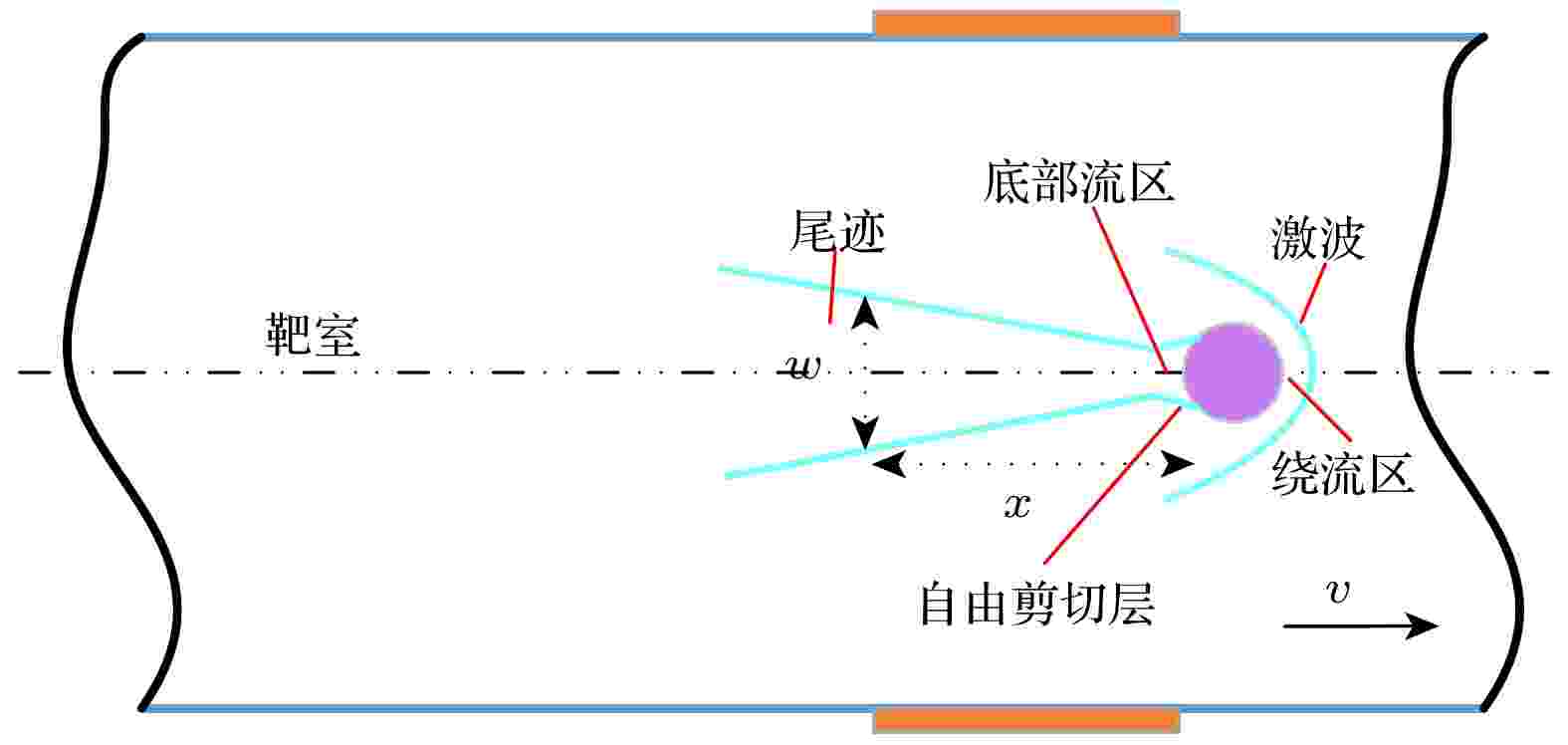
2022, 71 (11): 115202.
doi: 10.7498/aps.70.20212345
Abstract +
The ballistic target uses a two-stage light gas gun to launch the model into a hypersonic state, and the model forms a plasma wake when flying at a hypersonic speed in the target chamber. In order to obtain the radial two-dimensional distribution of transient plasma electron density in the wake of hypervelocity model, a seven-channel Ka-band microwave interferometer measuring system is developed. In the transceiver system, a transmitting antenna achieves the plane wave irradiation plasma, and a seven-port array antenna is used to receive plane waves which are passing through the plasma: the antenna beam can completely cover the radial range of the wake. The shortest response time of measuring system is 1 s, and electron density measurement range of the interferometer measuring system is 1011–1013/cm3 . The plasma is often treated as layered medium in data processing of multichannel microwave interferometer. Taking into consideration the effect of refraction on the stratified interface in this work, the ray tracing (RT) method is used to establish the electromagnetic propagation model. Combined with the measurement data to construct the objective function, the genetic algorithm (GA) is used to invert the radial two-dimensional distribution of the electron density under different test conditions. The result shows good agreement with the numerical simulation under the same test state, which proves the the data processing method reliable. Then, the influence of the layered model on the calculation result is analyzed, which shows that the seven-layer model is suitable for the wake modeling under given experimental conditions, and thus maximizing the number of receiving channels and ensuring the accuracy. The RT method is used for the first time to achieve the two-dimensional distribution of electron density in the wake of hypervelocity projectile, and some rules of two-dimensional electron density distribution of the hypersonic model under given experimental conditions are realized.
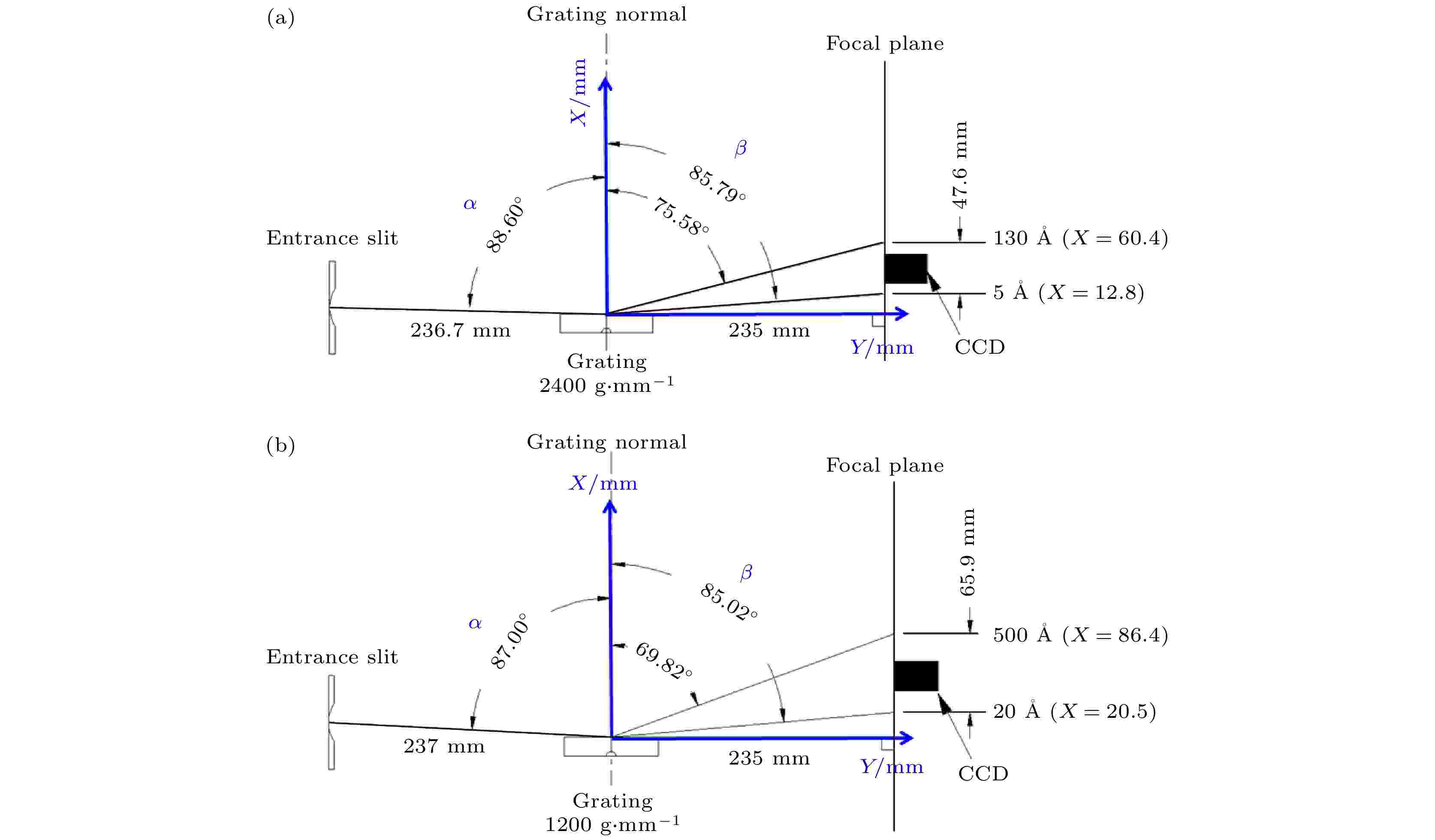
EDITOR'S SUGGESTION
2022, 71 (11): 115203.
doi: 10.7498/aps.71.20212383
Abstract +
The presence of high-Z impurities in magnetically confined fusion devices has different influences on the confinement property of the plasma due to the high cooling rate of high-Z impurities. The first wall of EAST is equipped with molybdenum tiles, molybdenum particles sputtered from inevitable plasma-wall interaction enter into the plasma and become high-Z impurity. In this paper, four fast-time-response extreme ultraviolet (EUV) spectrometers, a system which is upgraded in the EAST 2021 campaign, are used to monitor the line emission from impurity ions in the 5–500 Å wavelength range simultaneously. The in-situ wavelength calibration is carried out accurately using several well-known emission lines of low- and medium-Z impurity ions. The observed spectral lines are carefully identified based on the National Institute of Standards Technology (NIST) database, previously published experimental data and the time evolution of the normalized line intensity of emission lines from impurity ions. At the lower electron temperature (Te0 = 1.5 keV), the EUV spectra emitted from molybdenum ions in the range of 5–485 Å are systematically identified in EAST discharges accompanied with spontaneous sputtering events. As a result, two unresolved transition arrays of molybdenum spectra composed of Mo19+-Mo24+ (Mo XX-Mo XXV) and Mo16+-Mo29+ (Mo XVII-Mo XXX) are observed in the ranges of 15–30 Å and 65–95 Å. In addition, several spectral lines of lower molybdenum ions of Mo4+-Mo17+ (Mo V-Mo XVIII) in the ranges of 27–60 Å and 120–485 Å are observed and identified on EAST for the first time, including a few strong and isolated forbidden and resonant lines, e.g. Mo XII at 329.414 Å, 336.639 Å and 381.125 Å, Mo XIII at 340.909 Å and 352.994 Å, Mo XIV at 373.647 Å and 423.576 Å, Mo XV at 50.448 Å, 57.927 Å and 58.832 Å. Six spectral lines are newly observed in the range of 27–32 Å, i.e. (27.21 ± 0.01) Å, (27.37 ± 0.01) Å, (28.99 ± 0.01) Å, (30.81 ± 0.01) Å, (31.54 ± 0.01) Å and (31.83 ± 0.01) Å, which may be Mo XV-Mo XVIII spectral lines. As a result, twelve strong and isolated spectral lines are chosen in routine observation for impurity transport physical study. The identification of these spectral lines not only enriches the molybdenum atom database, but also provides a solid experimental data base for magnetically confined devices to study the behavior and transport in core and edge plasmas of high-Z impurity.

2022, 71 (11): 115204.
doi: 10.7498/aps.71.20220086
Abstract +
The low-pressure atmosphere rich in CO2 (~95%) on Mars makes the in-situ resource utilization of Martian CO2 and the improvement of oxidation attract widespread attention. It contributes to constructing the Mars base which will support the deep space exploration. Conversion of CO2 based on high voltage discharge has the advantages of environmental friendliness, high efficiency and long service life. It has application potential in the in-situ conversion and utilization of Martian CO2 resources. We simulate the CO2 atmosphere of Mars where the pressure is fixed at 1 kPa and the temperature is maintained at room temperature. A comparative study is carried out on the discharge characteristics of two typical electrode structures (with/without barrier dielectric) driven by 20 kHz AC voltage. Combined with numerical simulations, the CO2 discharge characteristics, products and their conversion pathways are analyzed. The results show that the discharge mode changes from single discharge during each half cycle into multi discharge pulses after adding the barrier dielectric. Each discharge pulse of the multi pulses corresponds to a random discharge channel, which is induced by the distorted electric field of accumulated charge on the dielectric surface and the space charge. The accumulated charge on the dielectric surface promotes the primary discharge and inhibits the secondary discharge. Space charge will be conducive to the occurrence of secondary discharge. The main products in discharge process include ${\rm{CO}}^+_2 $ , CO, O2, C, and O. Among the products, CO is produced mainly by the attachment decomposition reaction between energetic electrons and CO2 at the boundary of cathode falling zone, and the contribution rate of the reaction can reach about 95%. The O2 is generated mainly by the compound decomposition reaction between electrons and ${\rm{CO}}^+_2 $ near the instantaneous anode surface or instantaneous anode side dielectric surface, and the contribution rate of the reaction can reach about 98%. It is further found that the dielectric does not change the generation position nor dominant reaction pathway of the two main products, but will reduce the electron density from 5.6×1016 m−3 to 0.9×1016 m−3 and electron temperature from 17.2 eV to 11.7 eV at the boundary of the cathode falling region, resulting in the reduction of CO production. At the same time, the deposited power is reduced, resulting in insufficient $ {\rm{CO}}^+_2 $ yield near the instantaneous anode surface and instantaneous anode side dielectric surface and further the decrease of O2 generation.
CONDENSED MATTER: STRUCTURAL, MECHANICAL, AND THERMAL PROPERTIES
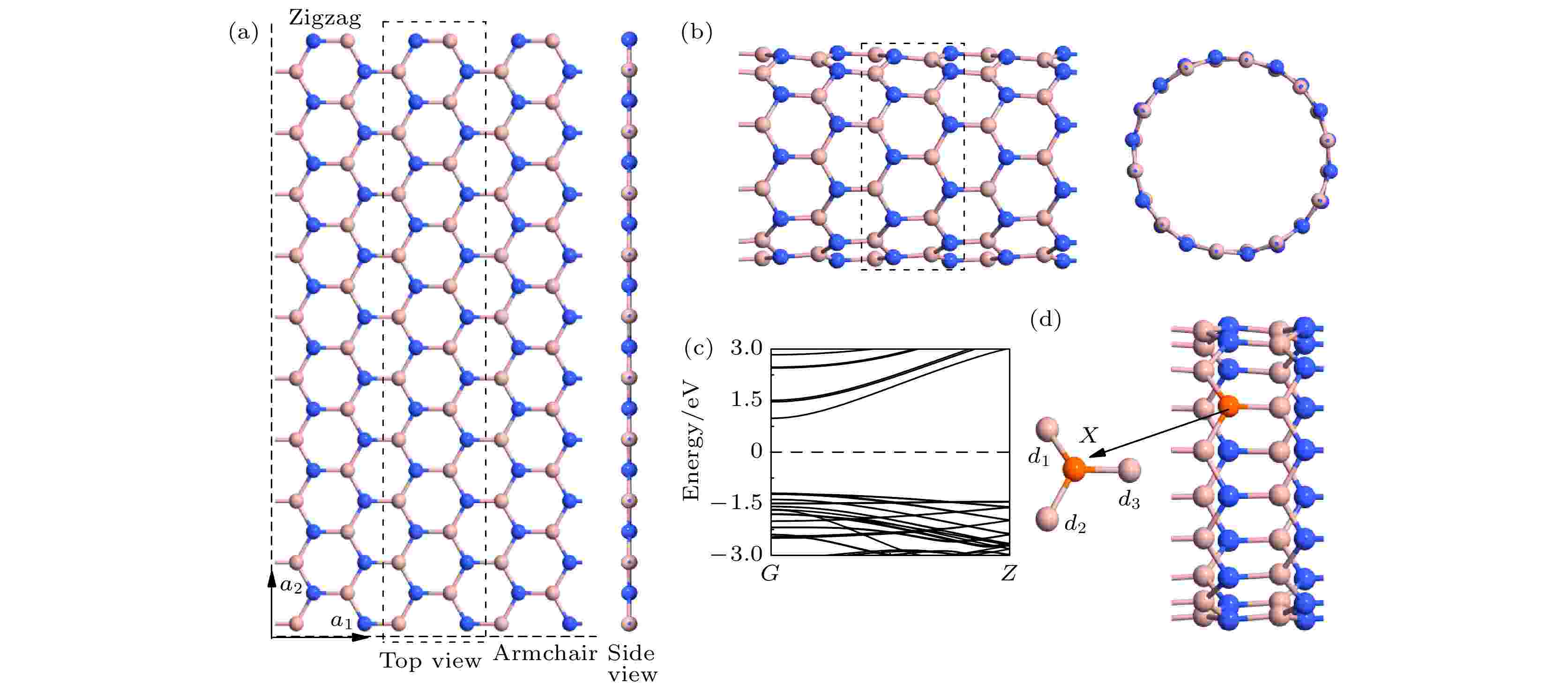
2022, 71 (11): 116101.
doi: 10.7498/aps.71.20212342
Abstract +
GaN is known as the third generation of semiconductor and holds promising applications. In this present work, one-dimensional zigzag nanotubes derived from GaN are studied in depth, mainly focusing on their chemical bondings, electronic structures, transport properties, and the regulating effects under gate voltage for nanotubes doped with low-concentration non-metallic atoms in main-groups IIIA-VIIA. Some important findings are obtained, such as the chemical bonds around a heteroatom atom, and their average bond length, binding energy, and chemical formation energy are closely related to the atomic number (the atomic radius), and the charge transfer between heteroatom and nanotubes is directly related to their relative electronegativity. More importantly, we find that although the intrinsic nanotube is a semiconductor, when it is doped with non-metallic atoms, the electronic phase of nanotube possesses an obvious odd-even effect. Namely, after being doped by hetero-atoms in main-groups IIIA, VA, VIIA, nanotubes are semiconductors, but they becomes metals after having been doped with hetero-atoms in main-groups IVA and VIA. This phenomenon has a close relation with the lone-paired electronic state. And also, It is found that with atom doping, the difference between carriers’ mobilities (the hole mobility and electron mobility) of semiconducting tubes can be regulated to reach one order of magnitude, especially the hole mobility and electron mobility can be obviously enhanced by a higher gate voltage. For example, when the gate voltage is increased to 18 V, the hole mobility rises nearly 20 times compared with the case without gate voltage.
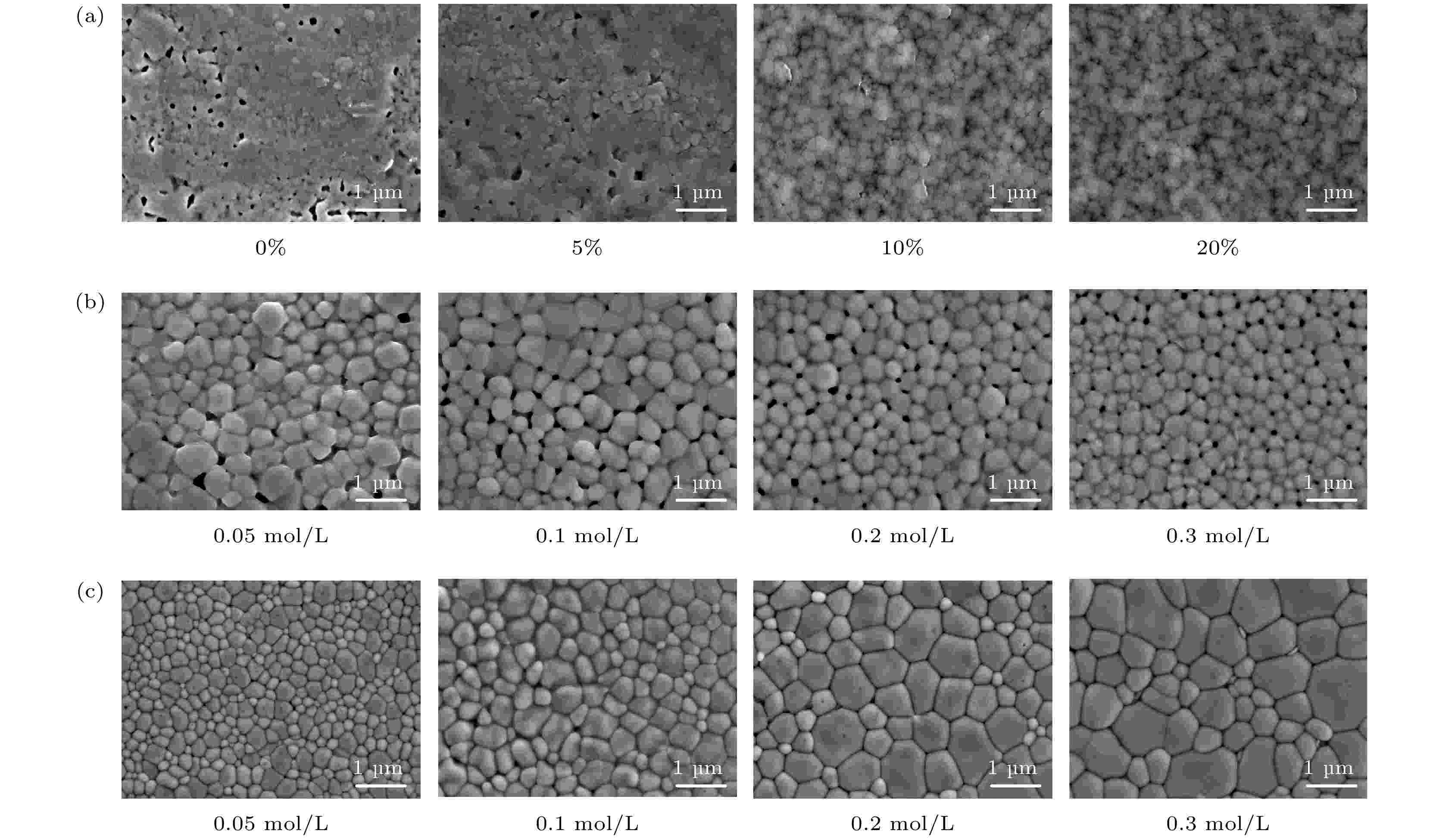
2022, 71 (11): 116801.
doi: 10.7498/aps.71.20212143
Abstract +
The CsPbIBr2 perovskite films deposited from the precursor solutions in air, usually suffer poor surface coverage and air-stability due to the uncontrolled nucleation and the existence of I– during the film formation, resulting in terrible photoelectric characteristics and reproducibility. At present, the high-quality CsPbIBr2 films are prepared under nitrogen atmosphere, which results in the increase of the cost and thus impedes their applications in air. Here in this work, we propose a strategy for growing the perovskite films with low defect density and better stability in air via dual-ligand-assisted (ligand 1 (LP) and ligand 2 (NH4SCN)) solution strategy. These ligands contain some organic molecules which have strong interaction with ions on the surface of perovskite thin film in order to regulate the addition of precursor ions onto the films. The high-quality CsPbIBr2 thin films are prepared in air with relative humidity of ≤60% by the spraying method. The results indicate that ligand 1 with hydrophilic group and hydrophobic group, a kind of surfactant, can effectively reduce the surface tension of perovskite precursor solution, improve the coverage of CsPbIBr2 perovskite film, and form a block layer of water and oxygen. However, the addition of ligand 1 in precursor solution inevitably introduces many grain boundaries, which is unfavorable for carrier transport and collection. Thus, ligand 2 is employed to control the nucleation of perovskite film as another ligand, resulting in reducing the point defect formation. Their combination is beneficial to forming the uniform perovskite film with large-size crystal and low-density defect. The high-quality crystallization of the perovskite film is found to simultaneously enhance the response and the durability of photodetectors. Thus, the unpackaged photodetectors (ITO/CsPbIBr2/Au) based on this strategy yield the outstanding photoelectric response under the excitation of 405 nm laser. This device exhibits a low dark current density of 2 × 10–4 mA/cm2, a fast response time of 20–21 µs, and high stability (81%, ≥70 d) in air with a relative humidity of 40%–60%. Hence, this study provides a simple method to prepare high-quality CsPbIBr2 perovskite thin films with low-density defect and realize air-stable and charge-transport-layer-free CsPbIBr2 photodetectors for practical applications in photoelectric detection field.
CONDENSED MATTER: ELECTRONIC STRUCTURE, ELECTRICAL, MAGNETIC, AND OPTICAL PROPERTIES

EDITOR'S SUGGESTION
2022, 71 (11): 117101.
doi: 10.7498/aps.71.20220179
Abstract +
In this study, we find new AgyIn3.33–y/3Se5 compounds in Ag-In-Se system by static diffusion method combined with common X-ray diffraction and backscattering electron analysis. The crystal structure belongs to the trilateral system with the P3m1 space group, which features a two-dimensional layered structure. The unit cell is composed of 9-atom quantum layers arranged in the sequence of Se1-In1-Se2-In2-Se3-Ag/In3-Se4-In4-Se5, and in-between these layers are bonded by the weak van der Waals force. The sintered bulk samples show highly anisotropic transport properties and have an ultra-low lattice thermal conductivity along the direction parallel to sintering pressure about 0.15 W·m–1·K–1 at 873 K. The intrinsically ultra-low lattice thermal conductivity mainly comes from low phonon velocity and the strong coupling between low frequency optical phonon and acoustic phonons. The AgyIn3.33–y/3Se5 compounds behave as an n-type conduction. The electrical conductivity is 4×104 S·m–1 and the Seebeck coefficient is –80 μV·K–1 at room temperature. Therefore, AgyIn3.33–y/3Se5 compounds show high electrical transport properties in a wide temperature range, and the power factor is around 5 μW·cm–1·K–2 in a range of 450–800 K. Owing to the ultra-low lattice thermal conductivity along the direction parallel to sintering pressure, Ag0.407In3.198Se5 reaches a maximum ZT of 1.01 at 873 K and an average ZT of 0.45 at 300–850 K. The discovery of AgyIn3.33–y/3Se5 expands the n-type copper based chalcogenide and lays an important foundation for the application of copper based chalcogenide.

COVER ARTICLE
2022, 71 (11): 117601.
doi: 10.7498/aps.70.20220410
Abstract +
The nitrogen-vacancy (NV) color center quantum system in diamond has shown great application potential in the fields of solid-state quantum computing and quantum precision measurement because of its unique advantages such as single-spin addressing and manipulation and long quantum coherence time at room temperature. The precise manipulation technology of single spin is particularly important for the development of the application of NV center. The common spin manipulation methods used in NV center quantum system are to drive and manipulate the electron spin by resonant alternating magnetic field. In recent years, the electrical control of quantum spin has attracted extensive attention. In this paper, using the alternating electric field to control the electron spin of NV center is studied. The alternating electric field generated by the electrode successfully drives the Rabi oscillation of the NV center spin between the $\Delta m_{\rm{s}}=\pm2$ magnetic-dipole forbidden energy levels of $|m_{\rm{s}}=-1\rangle$ and $|m_{\rm{s}}=+1\rangle$ . Further studies show that the frequency of the electrically driven Rabi oscillation is controlled by the power of the driven electric field but independent of the resonant frequency of the electric field. The combination of spin electric control and magnetic control technology can realize the full manipulation of the direct transition among the three spin energy levels of NV center, thus promoting the development of the researches and applications of NV quantum system in the fields of quantum simulation, quantum computing, precision measurement of electromagnetic field, etc.
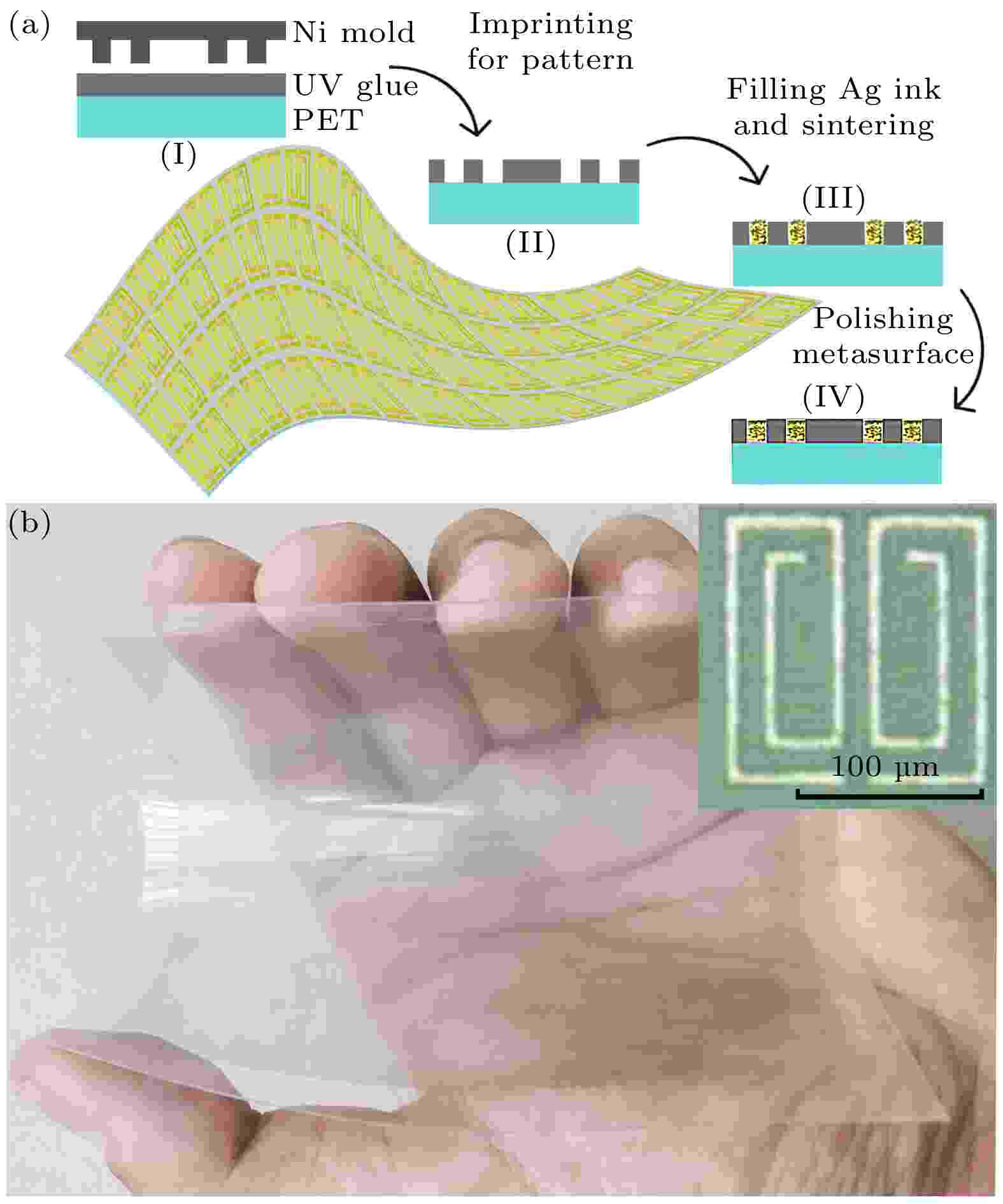
2022, 71 (11): 117801.
doi: 10.7498/aps.71.20212408
Abstract +
Electromagnetic devices made of artificially constructed metasurfaces can achieve filtering, modulation, sensing, and detection functions in the terahertz frequency band, which is essential for the applications of terahertz waves in the fields of communication and imaging. We design and prepare a flexible and transparent double spiral metasurface based on nano-printing technology, and use the metasurface to construct a rotating tunable filter, which can achieve regular tuning of the terahertz wave transmittance by rotating the metasurface. After rotating 90°, the transmittance at 0.52 THz increases from 8% to 67%, and the transmittance at 0.92 THz decreases from 68% to 3%, thus realizing active tuning with modulation depth greater than 88%. Moreover, the proposed nano-printing metasurfaces have excellent properties of ultra-thinness, flexibility, and visible light transparency, which are conducive to the miniaturization, light-weight and large-area preparation of terahertz tunable devices.
INTERDISCIPLINARY PHYSICS AND RELATED AREAS OF SCIENCE AND TECHNOLOGY
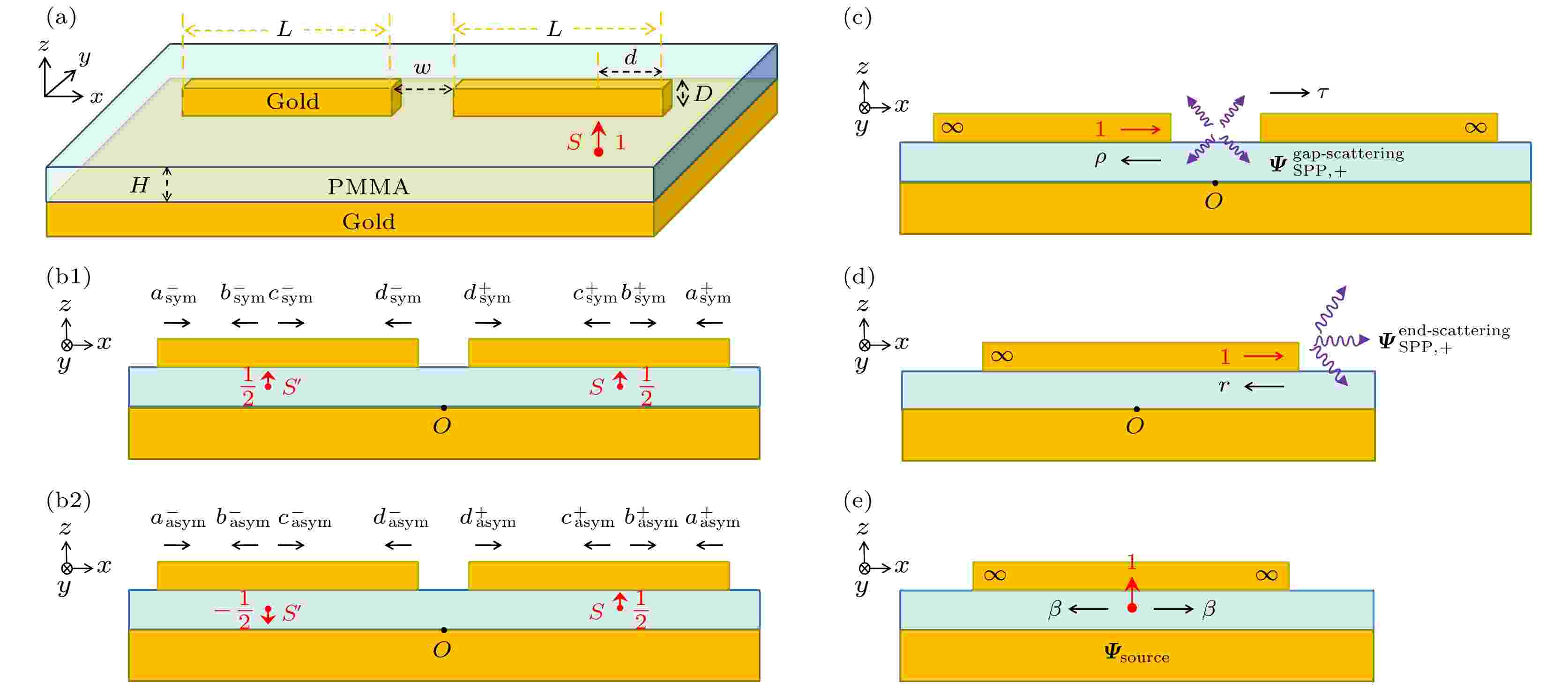
2022, 71 (11): 118101.
doi: 10.7498/aps.70.20212290
Abstract +
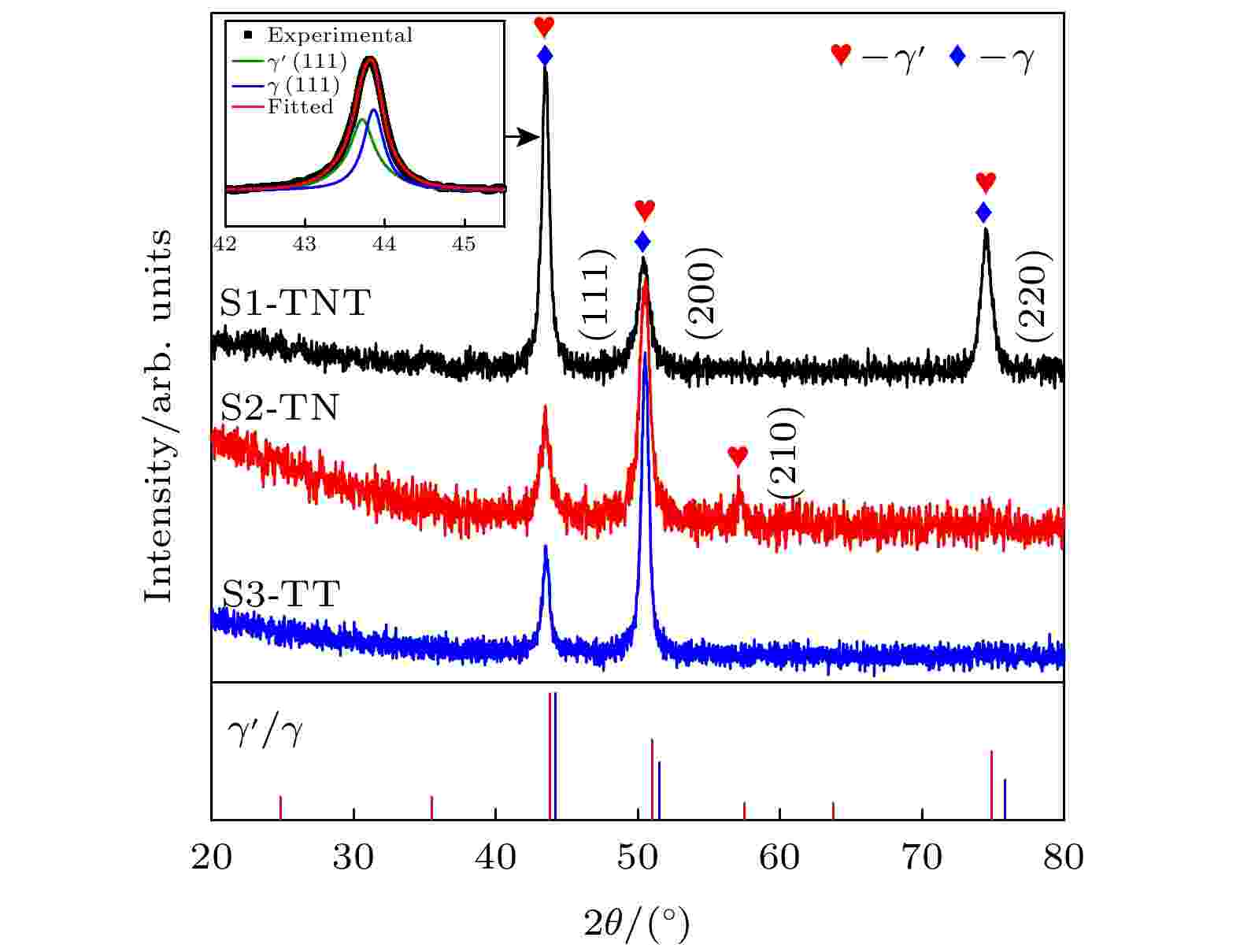
2022, 71 (11): 118102.
doi: 10.7498/aps.71.20212444
Abstract +
Co-base superalloys generally have high strengths, good oxidation- and corrosion-resistances, as well as excellent creep-resistant properties at high temperatures (HTs), which are ascribed to the coherent precipitation of cuboidal γ′ phase into face-centered-cubic (FCC) γ matrix induced by co-alloying of multiple elements. However, the cuboidal γ/γ′ coherent microstructure is liable to be destabilized after a long-time aging at HTs in Co-base superalloys. In the present work, the cluster formula is used to design a series of low-density Co-base superalloys with the composition of [Al-(Co8Ni4)]((Al0.5(Ti/Nb/Ta)0.5Mo0.5)(Mo0.5Cr0.5Co0.5)) (=Co8.5Ni4Al1.5Mo1.0Cr0.5(Ti/Nb/Ta)0.5). Alloy ingots are prepared by arc melting under an argon atmosphere, and are solid-solutionized at 1300 ℃ for 15 h and then aged at 900 ℃ for up to 500 h. Microstructural characterizations and mechanical properties of these alloys in different aged states are obtained by using XRD, SEM, EPMA, TEM, and HV. It is found that all these alloys with Ti/Nb/Ta, Ti/Nb, and Ti/Ta in an equi-molar mixing have a special coherent microstructure with cuboidal γ′ phase uniformly-precipitated into the γ matrix, which is contributed to the moderate lattice misfit of γ/γ′ (0.27%–0.34%). Moreover, these cuboidal γ′ phase are coarsened slowly during aging, in which the microhardness does not vary obviously with aging time (275 HV–296 HV). Especially, the alloy with (Ti/Ta)0.5 exhibits the highest γ/γ′ microstructural stability with a slow coarsening rate after aging 500 h, and no other second phases appear near the grain boundaries. While needle and bulk particles would precipitate on grain boundaries in other alloys after 500 h-aging.
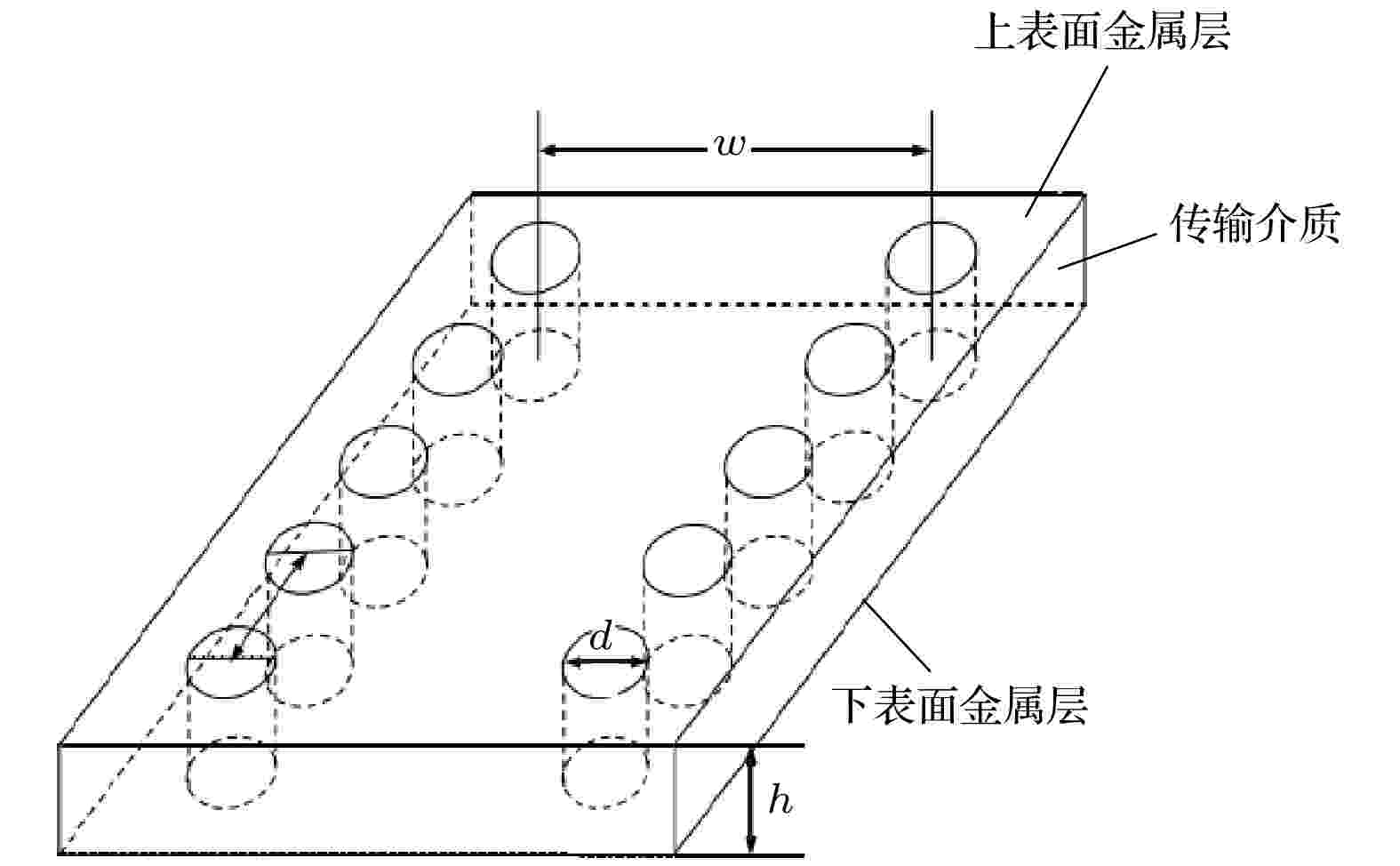
2022, 71 (11): 118401.
doi: 10.7498/aps.71.20220072
Abstract +
In a microwave circuit system, the discontinuity caused by electromagnetic wave entering into another transmission medium from one transmission medium will greatly affect the transmission performance of the system, which has always been the focus of microwave circuit design. When the electromagnetic wave band enters into the millimeter wave and terahertz band, how to realize the efficient and low loss transmission of electromagnetic wave from the metal rectangular waveguide interface to the dielectric substrate is the key to the realization of millimeter wave terahertz communication system. Substrate integrated waveguide to rectangular waveguide transition structure is an important structure connecting waveguide interface and planar circuit in millimeter wave and terahertz communication system, and it is the basis of designing planar antenna array. In this paper, a W-band and D-band substrate integrated waveguide to rectangular waveguide transition structure is designed, which improves the transmission performance and expands the bandwidth through the stepped structure. On this basis, a one-in-two divider structure is designed, with an empty cavity structure used to reduce the loss and expand the bandwidth. These two structures have the characteristics of simple structure and easy processing, and their practicalities are verified by simulation optimization and actual low temperature co-fired ceramic substrate processing and assembly test. The actual test results show that the substrate integrated waveguide to rectangular waveguide transition structure can achieve a return loss of less than –10 dB in a frequency ranges of 126–149 GHz and 112–139 GHz, the one-in-two divider structure can achieve a return loss of less than –10 dB in the frequency band of 132–155 GHz.

2022, 71 (11): 118501.
doi: 10.7498/aps.71.20212405
Abstract +
In this paper, the 60-MeV proton beam is used to carry out the proton irradiation experiment on NAND (not and) flash memory, the single-event-upset cross section data of the floating gate cell are obtained, the annealing rule of the floating gate cell errors is analyzed, and the effect of proton irradiation on the data retention capability of floating gate cells is studied. The obtained results are as follows. The single-event-upset cross section of the floating gate cell increases with the increase of proton energy, and decreases with the increase of proton fluence. The floating gate cell errors continue to increase over time, and this effect is more pronounced when low energy protons are incident. After proton irradiation, the data retention capability of the floating gate cell is significantly degraded. The analysis suggests that the high energy protons are indirectly ionized through the nuclear reaction with the target atom, causing single-event-upset of the floating gate cell. The correlation between the upset cross section and the proton fluence is due to the difference in single-event-effect sensitivity of the floating gate cell. The proton-induced non-ionizing damage can form partially permanent defect damage in the tunnel oxide layer, creating multiple auxiliary trap channels that can leak floating gate electrons, resulting in the increase of floating gate cell errors and the degradation of data retention capability.
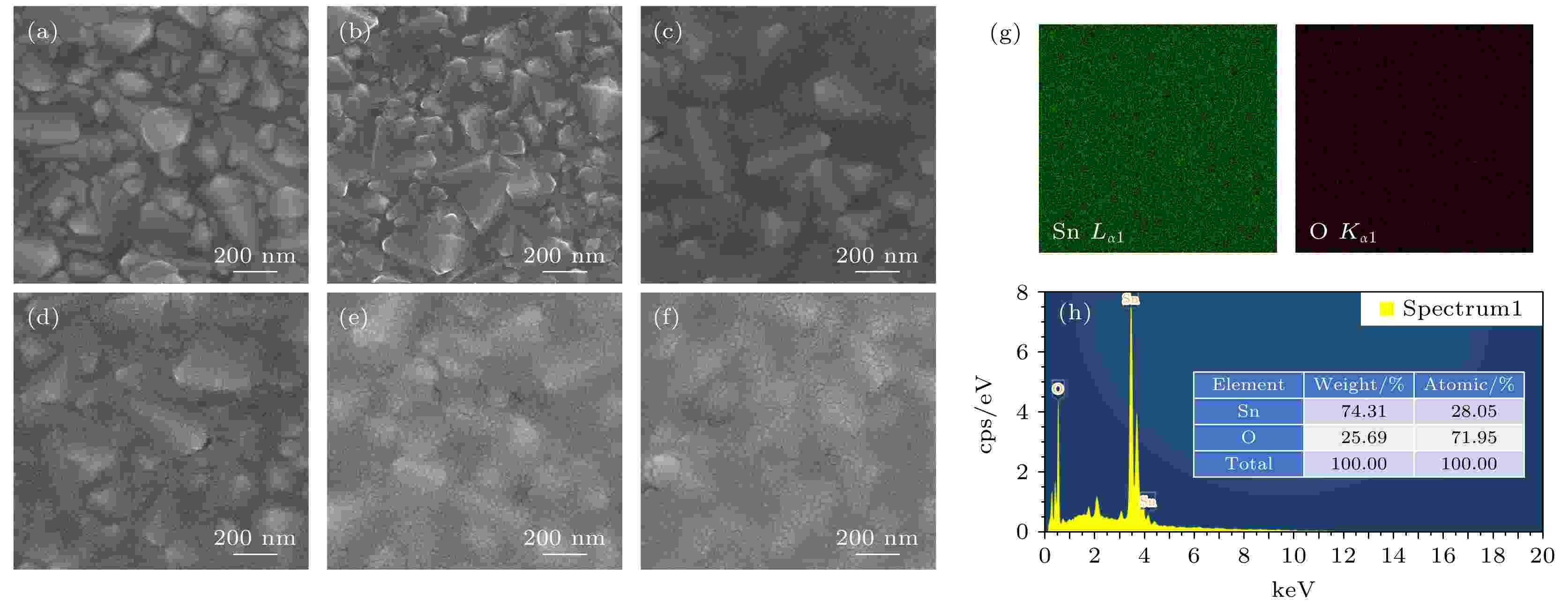
2022, 71 (11): 118801.
doi: 10.7498/aps.71.20211930
Abstract +
SnO2 has the advantages of excellent photostability and can be prepared at low-temperature below 200 ℃. It is regarded as one of the excellent materials for the electron transport layer, and widely used in efficient and stable planar heterojunction perovskite solar cells. In this work, the low-cost, dense and uniform SnO2 electron transport layer is prepared by spin coating at low temperature (150 ℃) for perovskite solar cells with a structure of FTO/SnO2/CH3NH3PbI3 (MAPbI3)/Spiro-OMeTAD/Au. The crystallization and photoelectric properties of SnO2 electron transport layers prepared at different concentrations (2.5%–10%) at 150 ℃, and the influences of SnO2 electron transport layers on the formation of perovskite films and the performances of perovskite solar cells are discussed. By analyzing the scanning electron microscope (SEM), ultraviolet-visible light absorption spectrum (UV-Vis) and transmission spectrum of the SnO2 film, it is found that the coverage and light transmittance of the substrate and band gap of the SnO2 film increase as the SnO2 content increases, while the absorbance decreases. By analyzing the SEM, UV-Vis, X-ray diffraction (XRD) and steady-state photoluminescence spectrum (PL) analysis of the SnO2/MAPbI3 thin film, it is found that the MAPbI3 deposited on the SnO2 layer with a concentration of 7.5% is uniform and pinhole-free, has the largest particle size and the best crystallinity, as well as more effective charge extraction capability and transport capability. By analyzing the electrochemical impedance (EIS) and external quantum efficiency (EQE) of the device, the SnO2 electron transport layer with a concentration of 7.5% has better interface contact and lower interface resistance, which is beneficial to reducing the recombination of carriers and improving the photoelectric conversion capability, The perovskite solar cells based on SnO2 layer prepared with a concentration of 7.5% reaches a photoelectric conversion efficiency of 15.82% (Voc = 1.06 V, Jsc = 21.62 mA/cm2, FF = 69.40%), After storing for 600 h in ambient air ((25±5) ℃, RH>70%) without encapsulation, its efficiency remains 92% of the initial efficiency. At the same time, we prepare flexible devices on flexible substrates (TIO/PEN) by using SnO2 precursor with a concentration of 7.5%, which exhibits good photovoltaic performance and achieves a photoelectric conversion efficiency of 13.12%, and storage time for 84 d in ambient air ((30±5) ℃, RH>70%) without encapsulation, its efficiency remains 48% of the initial efficiency. The PCE retains 78% of the initial efficiency after 1000 bending cycles with a bending radius of 3 mm. The study of optimizing the concentration of SnO2 has laid a foundation for improving the performance of flexible perovskite solar cells.
GEOPHYSICS, ASTRONOMY, AND ASTROPHYSICS
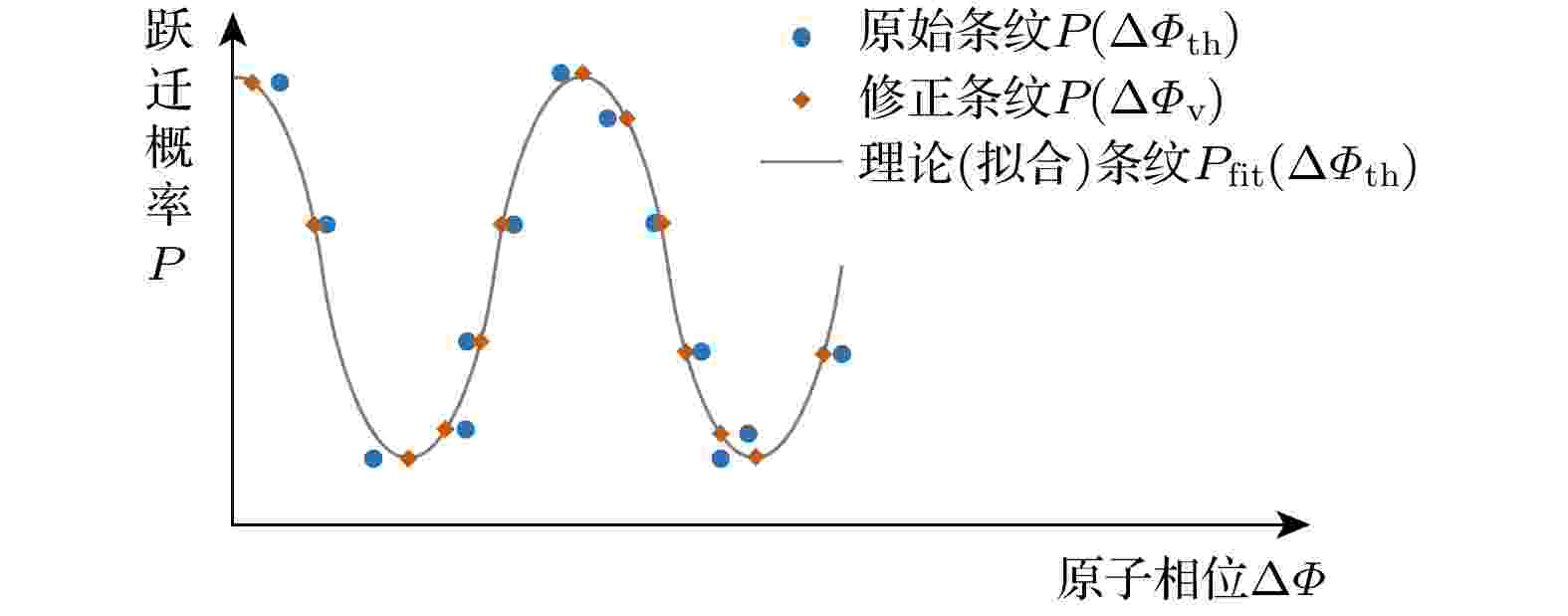
2022, 71 (11): 119101.
doi: 10.7498/aps.71.20220037
Abstract +
Absolute gravimeter has played an important role in geophysics, metrology, geological exploration, etc. It is an instrument applying laser interferometry or atom interferometry to the measurement of gravitational acceleration g (approximately 9.8 m/s2). To achieve a high accuracy, a vibration correction method is often employed to reduce the influence of the vibration of the reference object (a retro-reflector or a mirror) on the measurement result of absolute gravimeter. Specifically, in an atomic-interferometry absolute gravimeter, the phase noise caused by the vibration of the reference mirror, namely the vibration phase, can be calculated from the output signal of a sensor, either a seismometer or an accelerometer, placed below or next to the mirror. Considering this vibration phase, the fringe signal of the atomic interferometer as a function of the phase shift set by the control system of the gravimeter can be corrected to approach to an ideal sinusoidal curve, thus reducing the fitting residual. Currently, the parameters in the algorithm of most vibration correction methods used in atomic-interferometry absolute gravimeters are set to be constant. As a result, the performances of these methods may be limited when the practical transfer function between the real vibration of the reference mirror and the signal of the sensor has a variation due to the change of measurement environments. In this paper, based on a simplified model of the practical transfer function previously proposed in an algorithm used in laser-interferometry absolute gravimeter, a new vibration correction method for atomic-interferometry absolute gravimeter is presented. Firstly, a detailed description of its principle is introduced. With a searching algorithm, the time delay and the proportional element in the simplified model can be obtained from the fringe signal of the atomic interferometer and the output of the vibration sensor. In this way, the parameters used to calculate the vibration phase can be adjusted to approach to their true values in different environments, causing the fitting residual of the corrected fringe to decrease as much as possible. Then the measurement results of the homemade NIM-AGRb-1 atomic-interferometry absolute gravimeters using this method is analyzed. It is indicated that with the vibration correction algorithm, the standard deviation of the fitting residual of the measured fringe signal can be reduced by 58% at the best level in a quiet environment. In the future, the performance of this vibration correction algorithm will be further improved in other atomic-interferometry absolute gravimeters during their measurements in hostile environments.
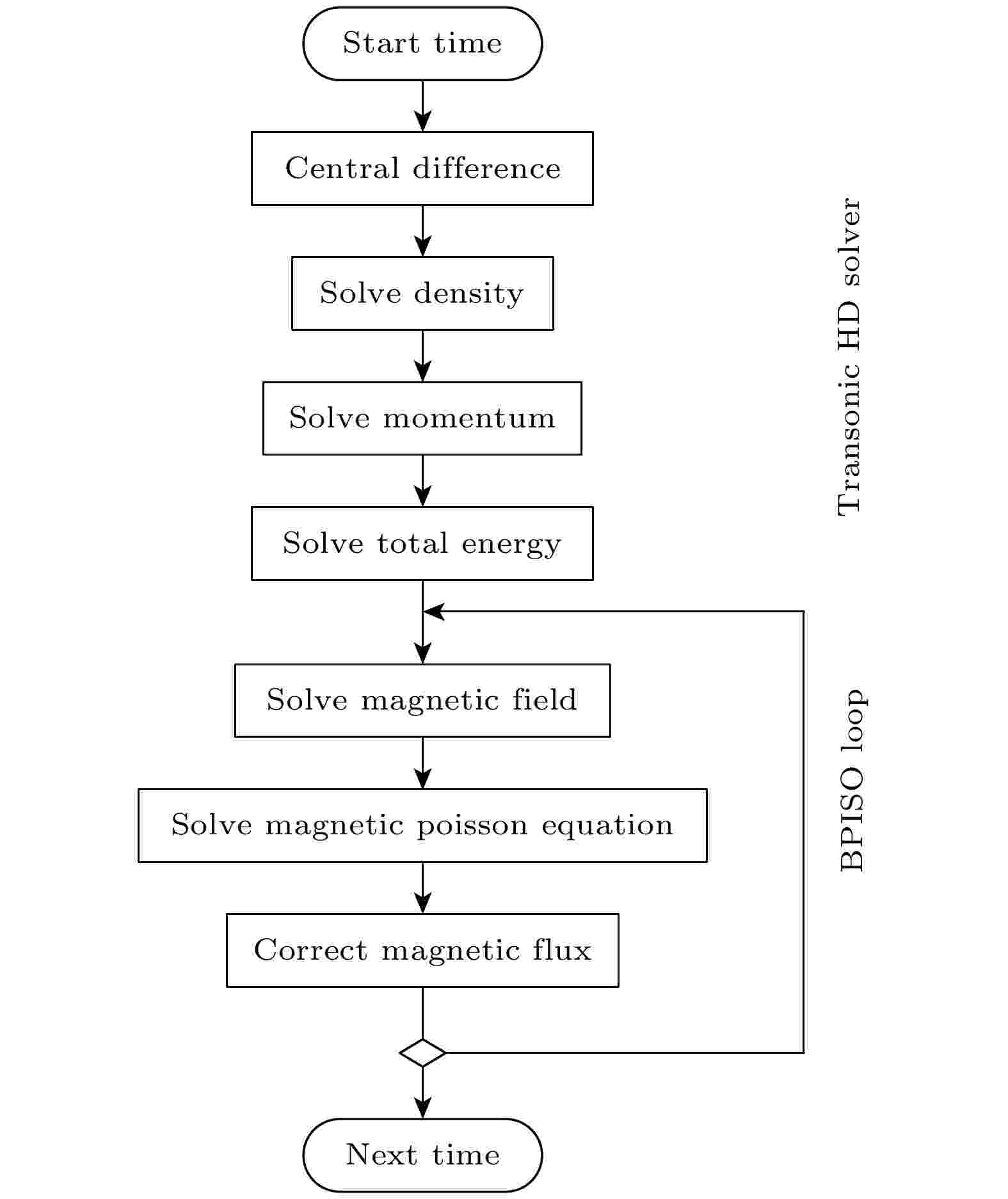
2022, 71 (11): 119501.
doi: 10.7498/aps.71.20212432
Abstract +
We develop a compressible magnetohydrodynamic solver to simulate the transonic flows based on an open-source computational fluid dynamics platform OpenFOAM. The solver is achieved by modifying the density-based Riemann solver rhoCentralFoam which adopts a central scheme and is available in OpenFOAM. To improve simulation accuracy and avoid non-physical oscillations, a specialized pressure-implicit algorithm with the splitting of operators is implemented to guarantee the incompressibility of magnetic field. The solver is benchmarked and the convergence rate is between the first and the second order. After benchmark, we apply this solver to magnetohydrodynamic simulations of intense-laser-produced plasma. The influences of uniform axial magnetic field and nonuniform coil-current-induced magnetic field on laser-produced plasma jets are investigated. With the uniform axial magnetic field, the positions of nozzle and the distance between knots are linearly related to square root of thermal over magnetic pressure. With the nonuniform magnetic field generated in the coil, knots are nonlinearly distributed in space and the nozzle position is modulated according to preliminary simulations. In the two kinds of magnetic fields, when the B-field strength is the same at coil center, the magnetic field of relatively small coils can shorten the times of forming nozzles and knots, suggesting that the coil magnetic field is equivalent to a higher uniform one. The simulations can be used as a reference for our future experiment on magnetized laser-produced plasma jet. Meanwhile, our simulation investigation shows that this magnetohydrodynamic solver is suitable for engineering calculation for laser plasma experiments and can deal with the situation with relatively complex configurations.































